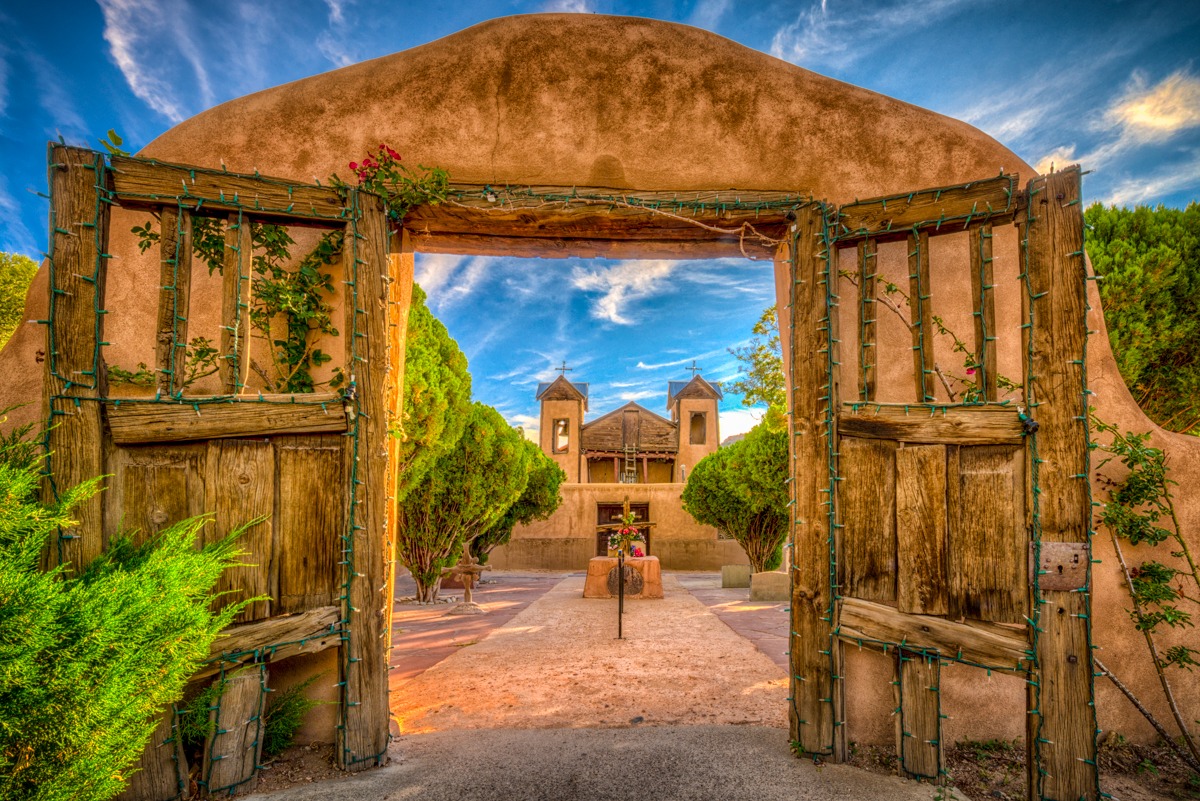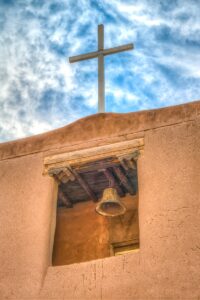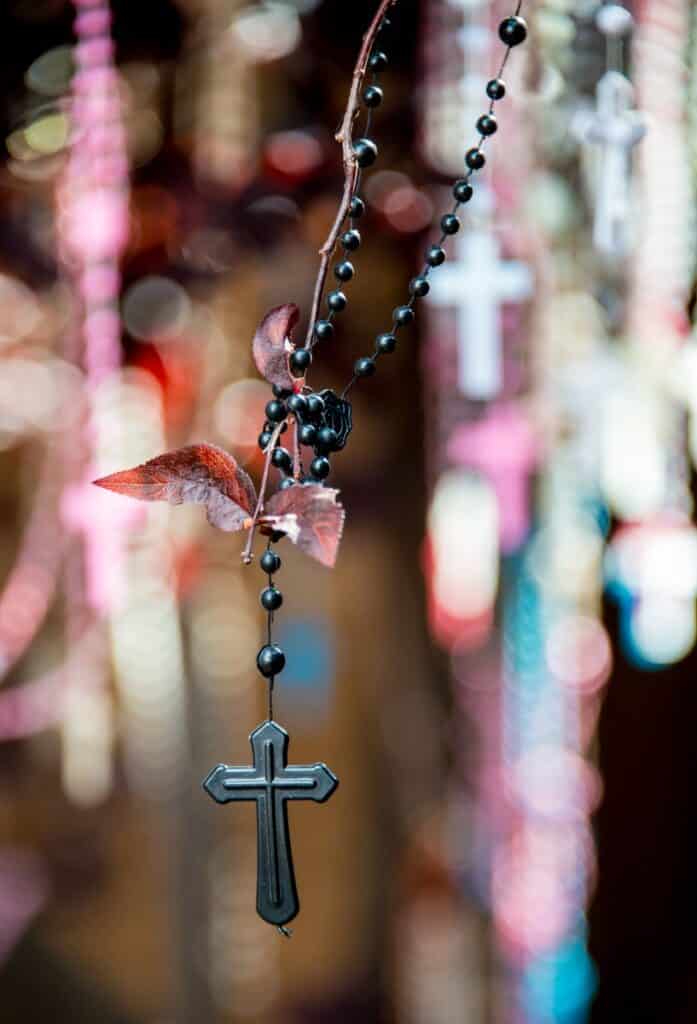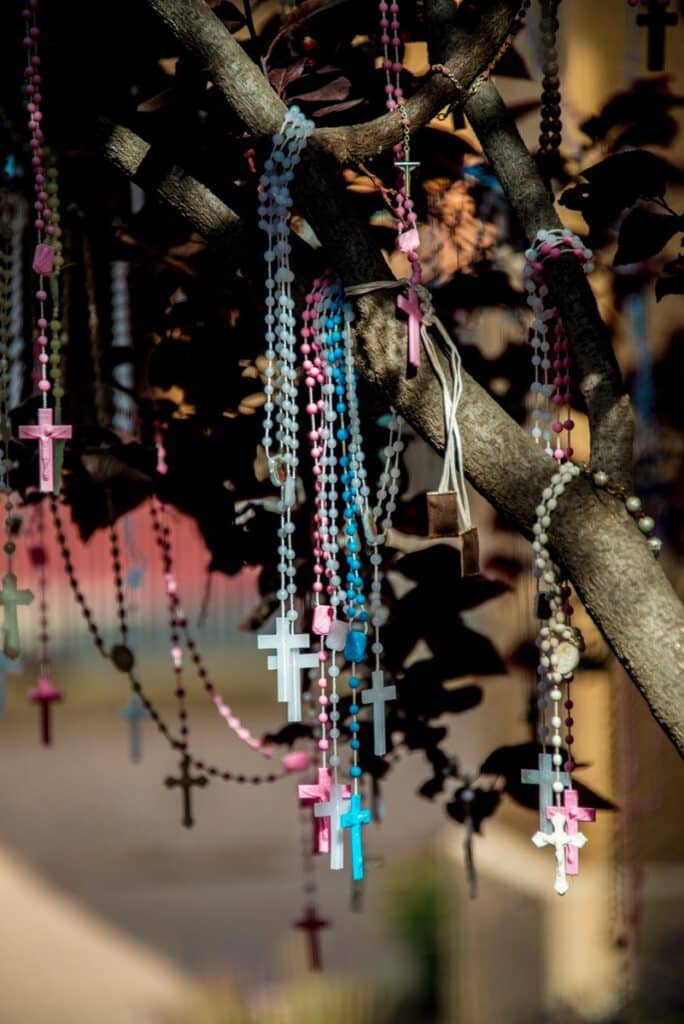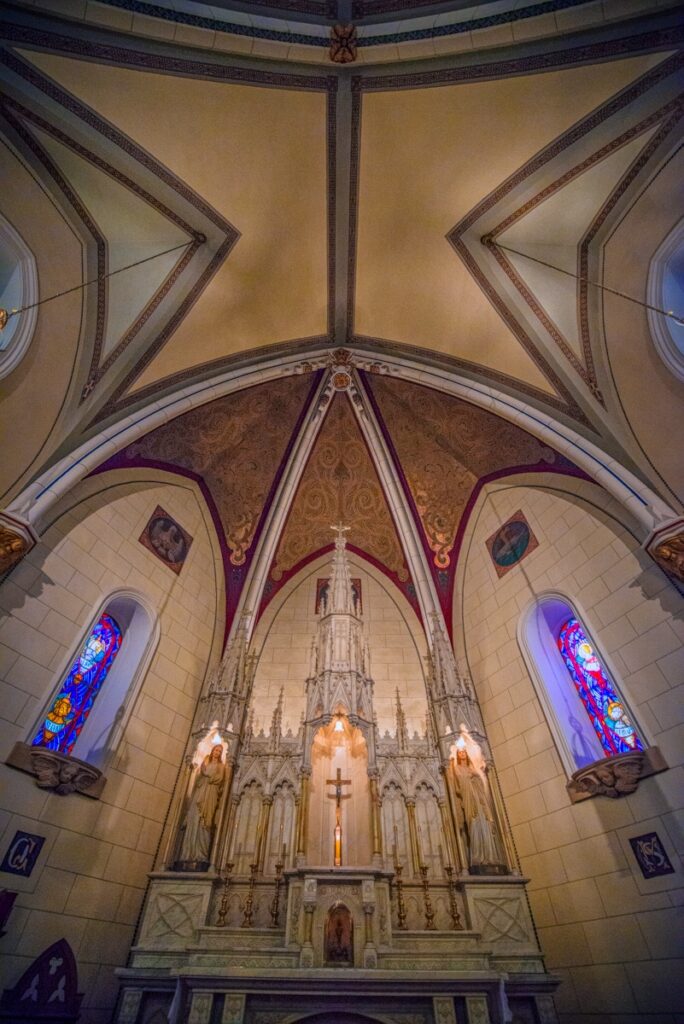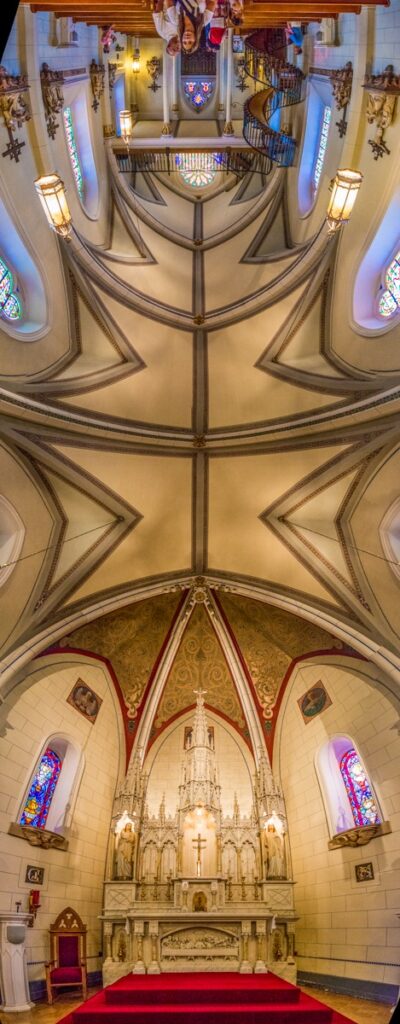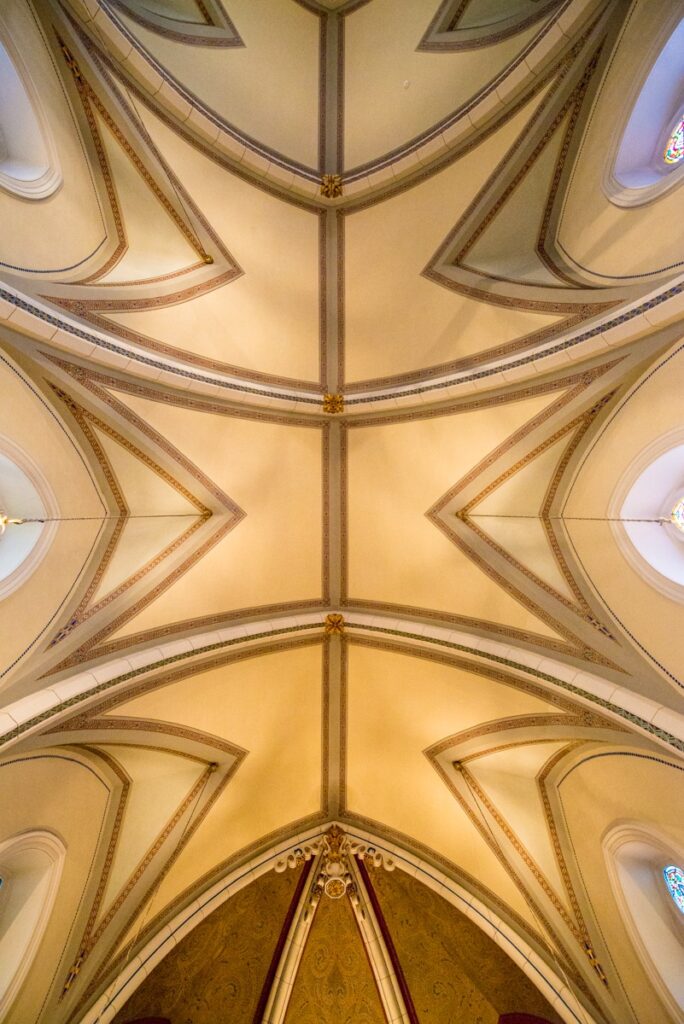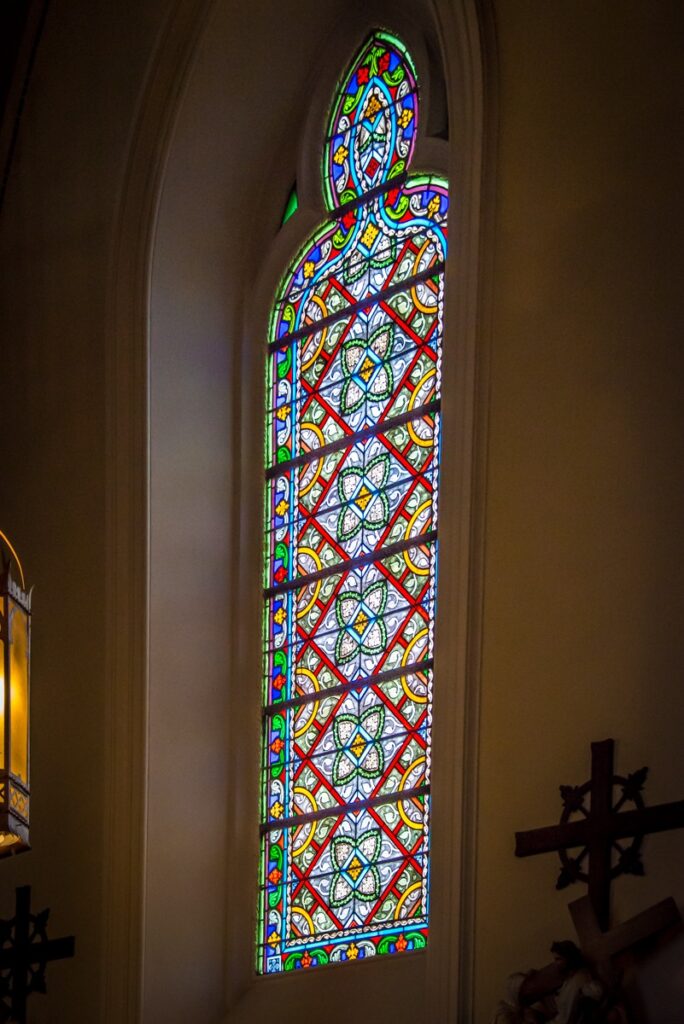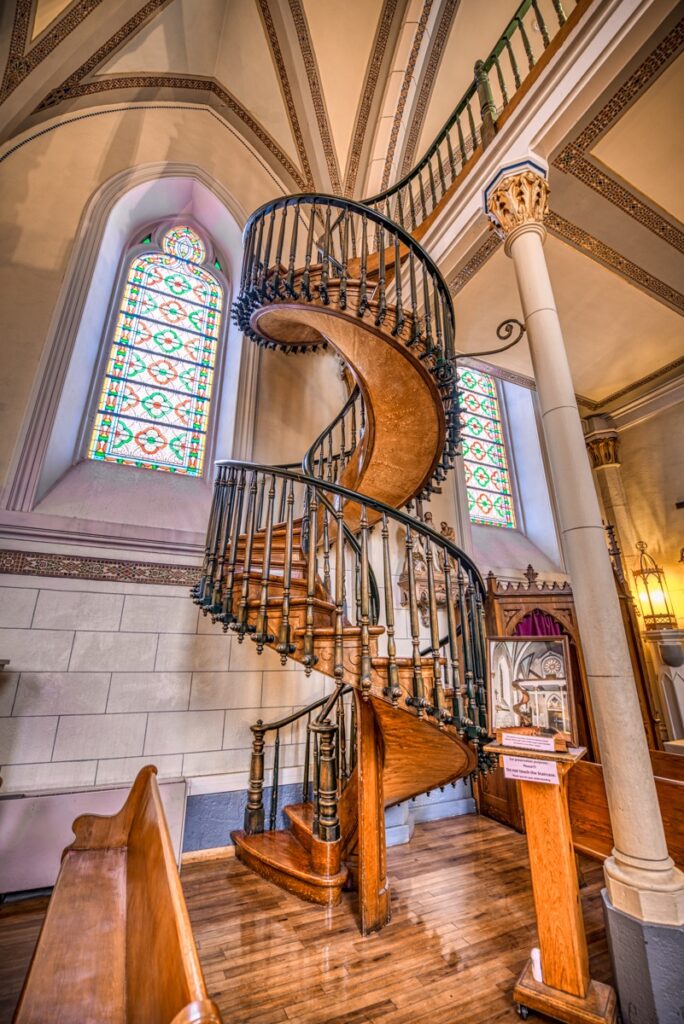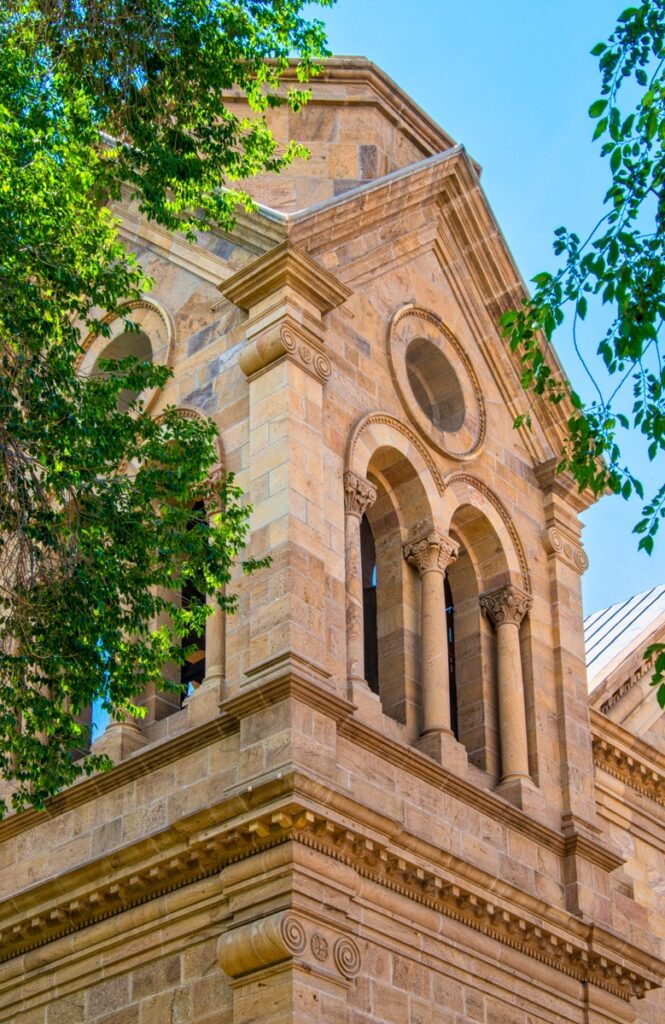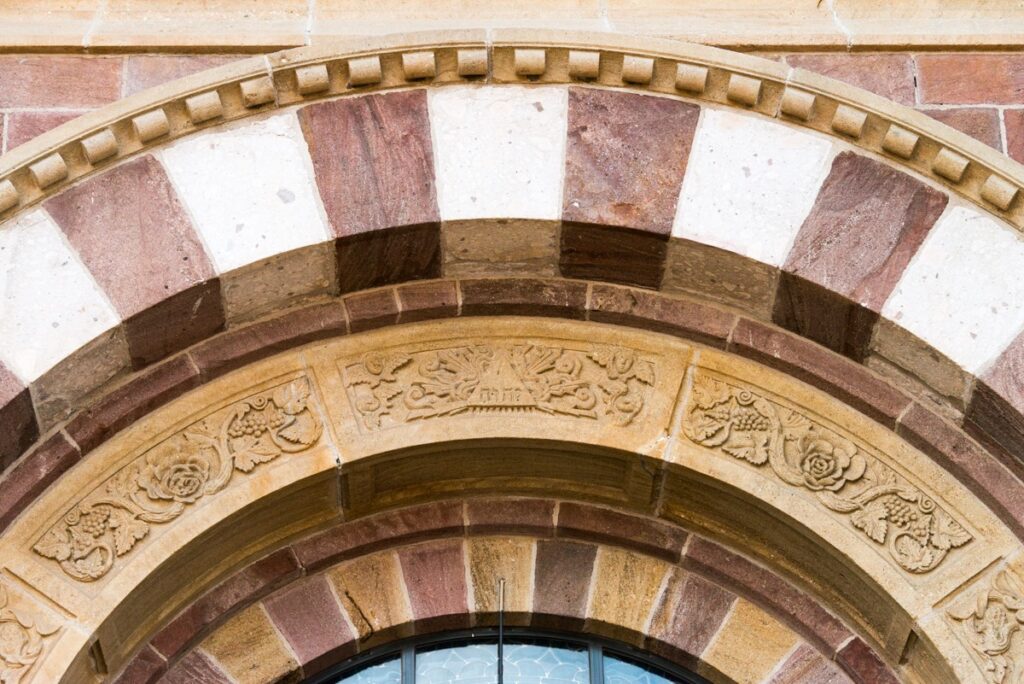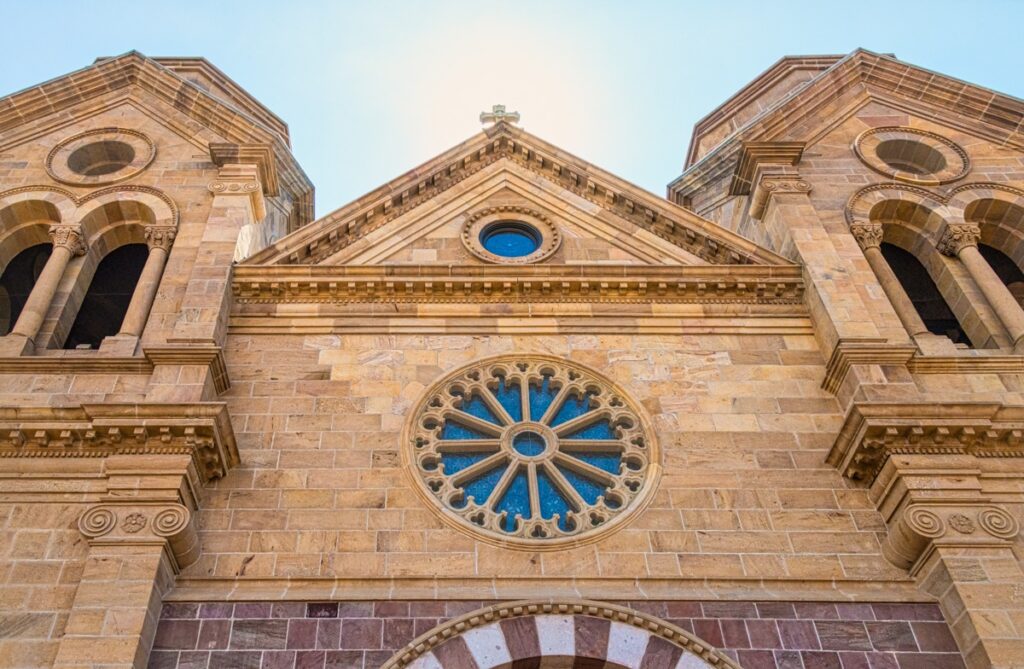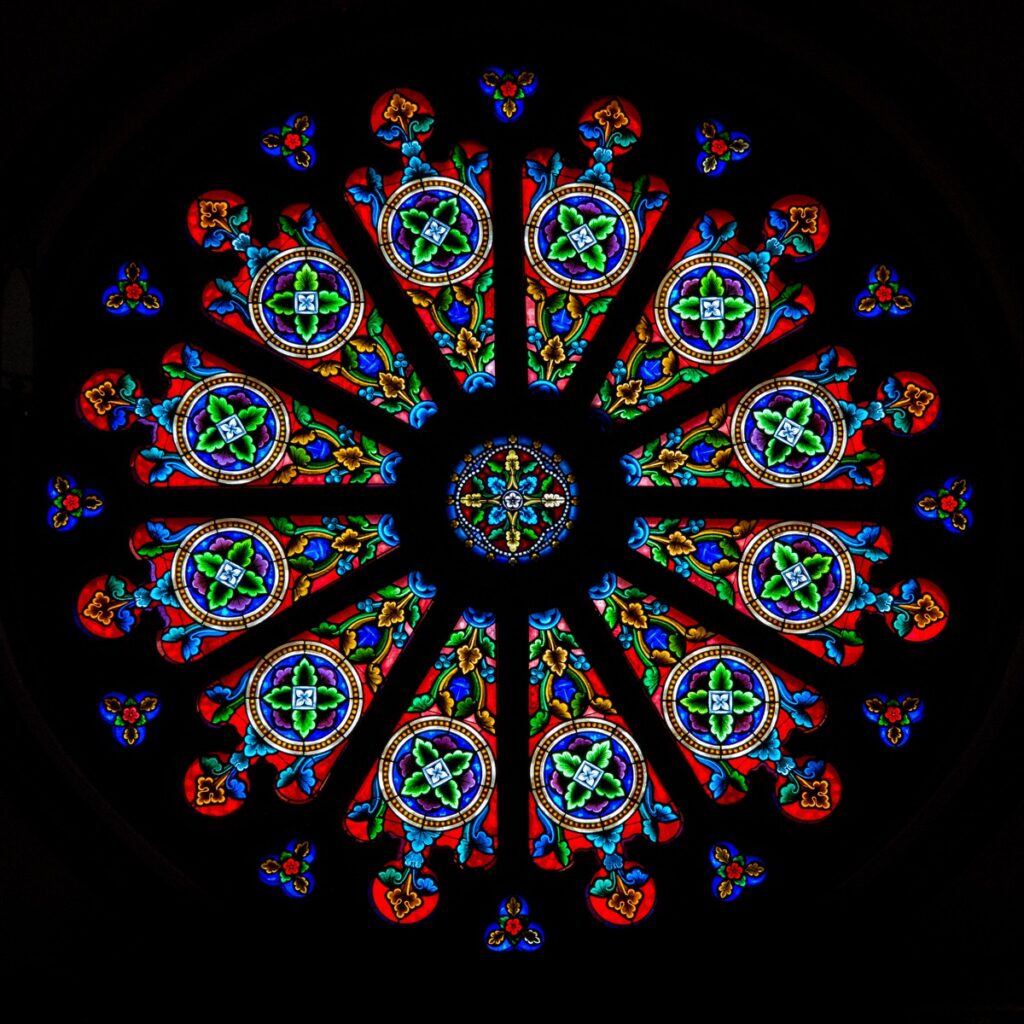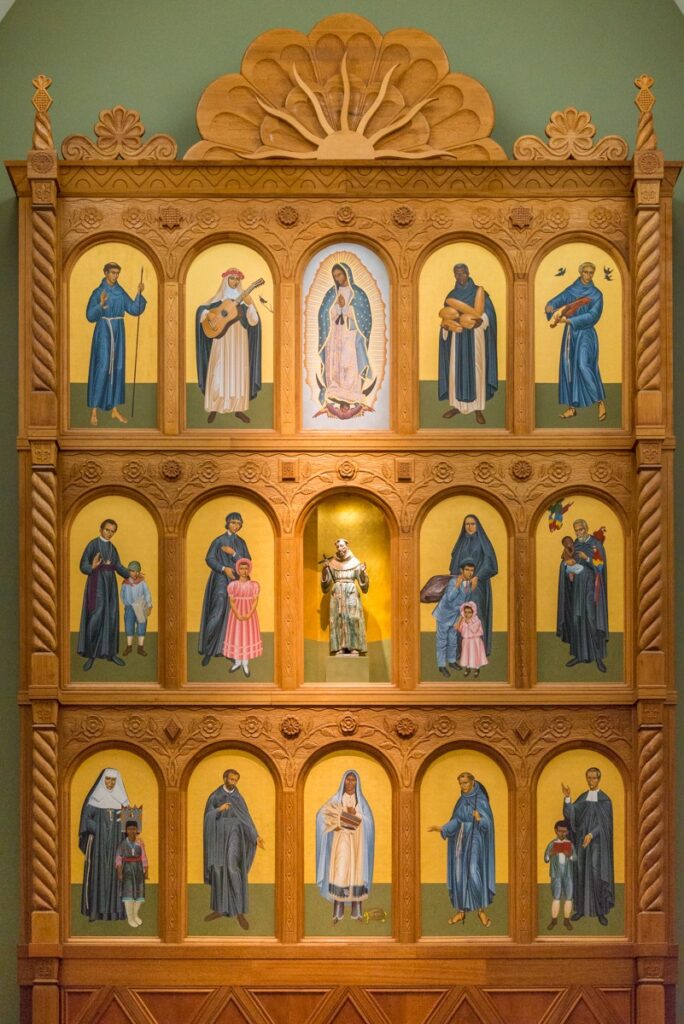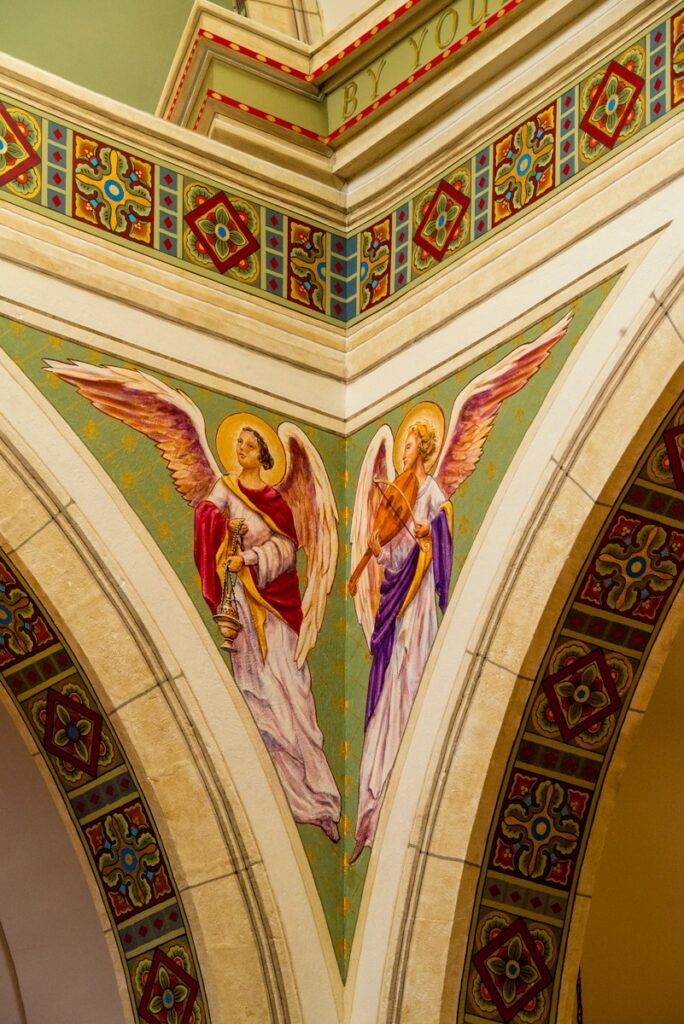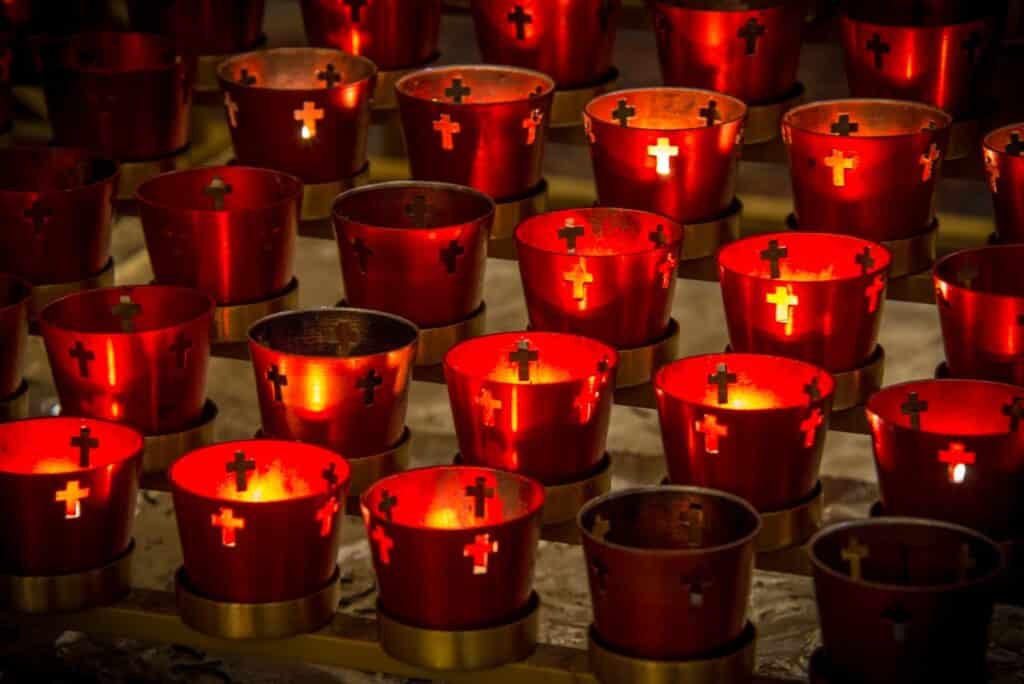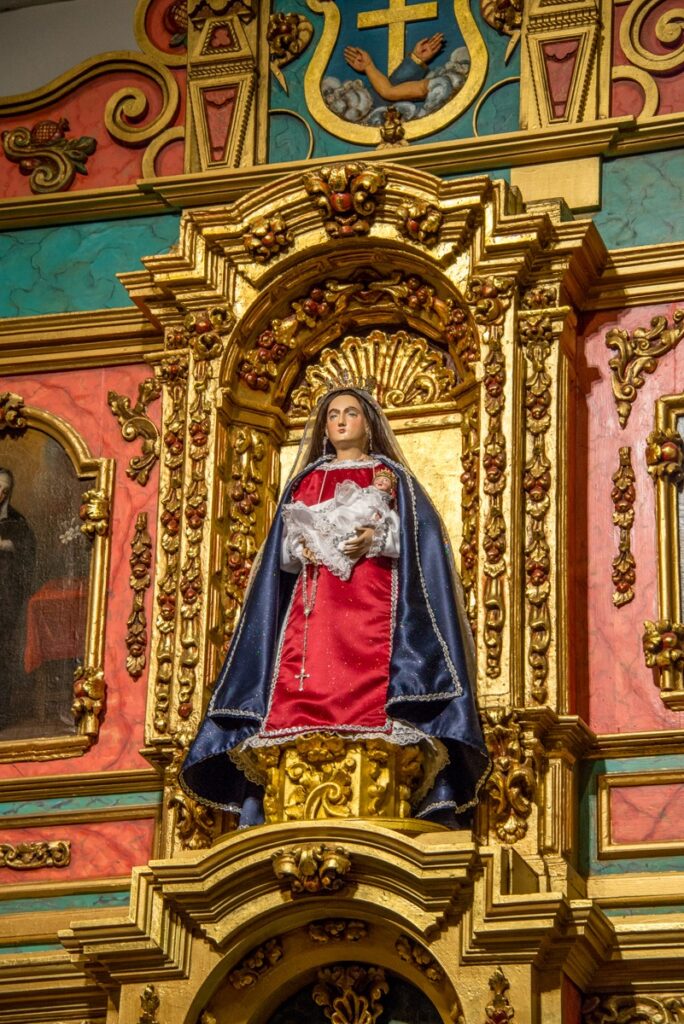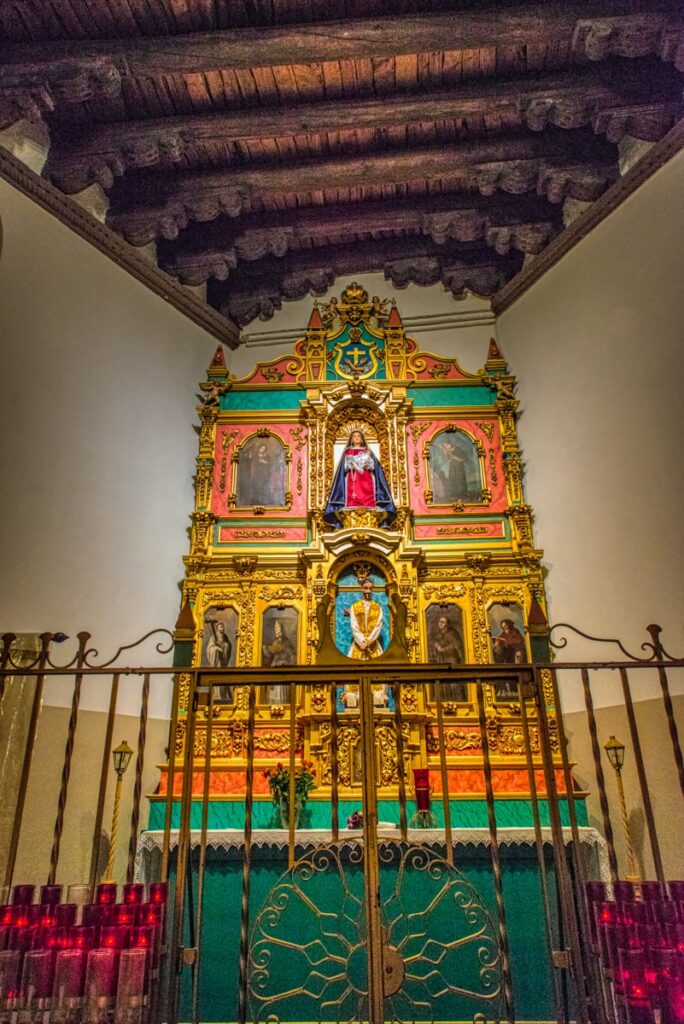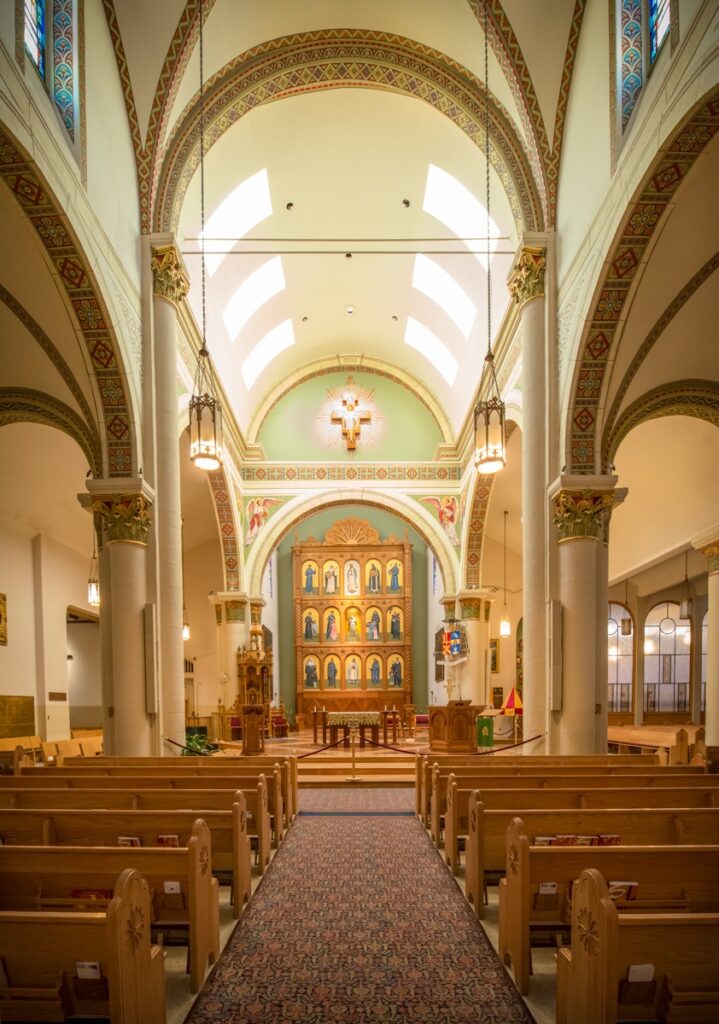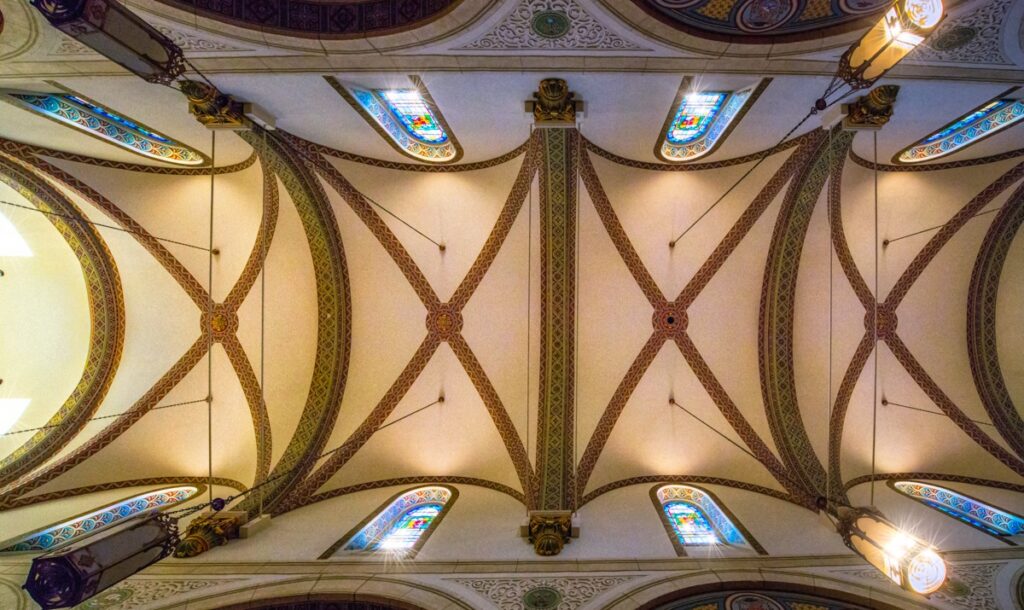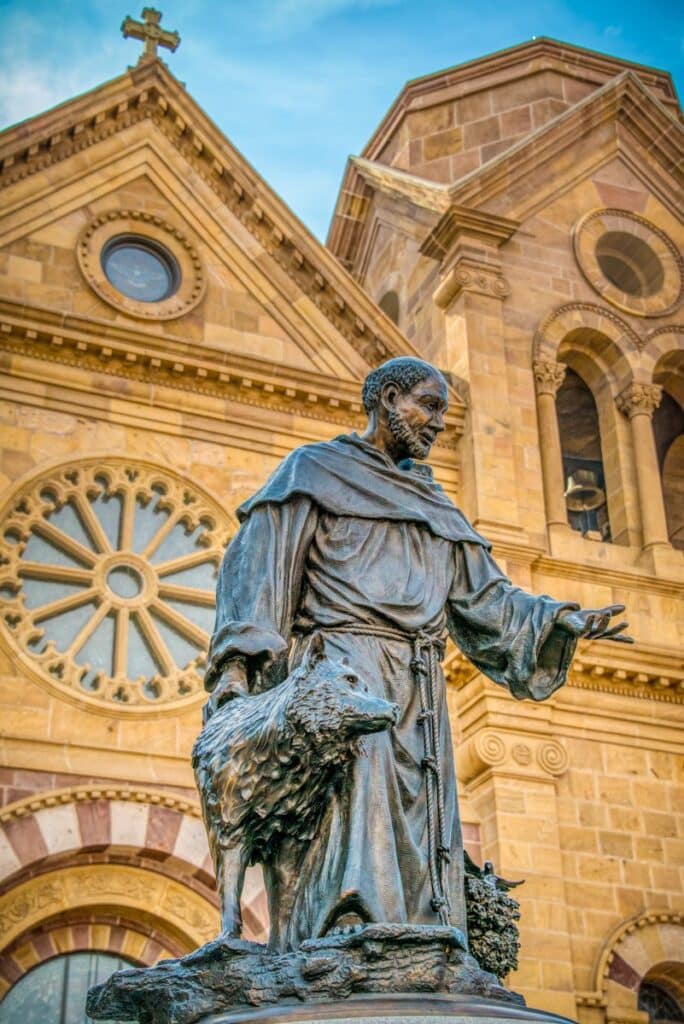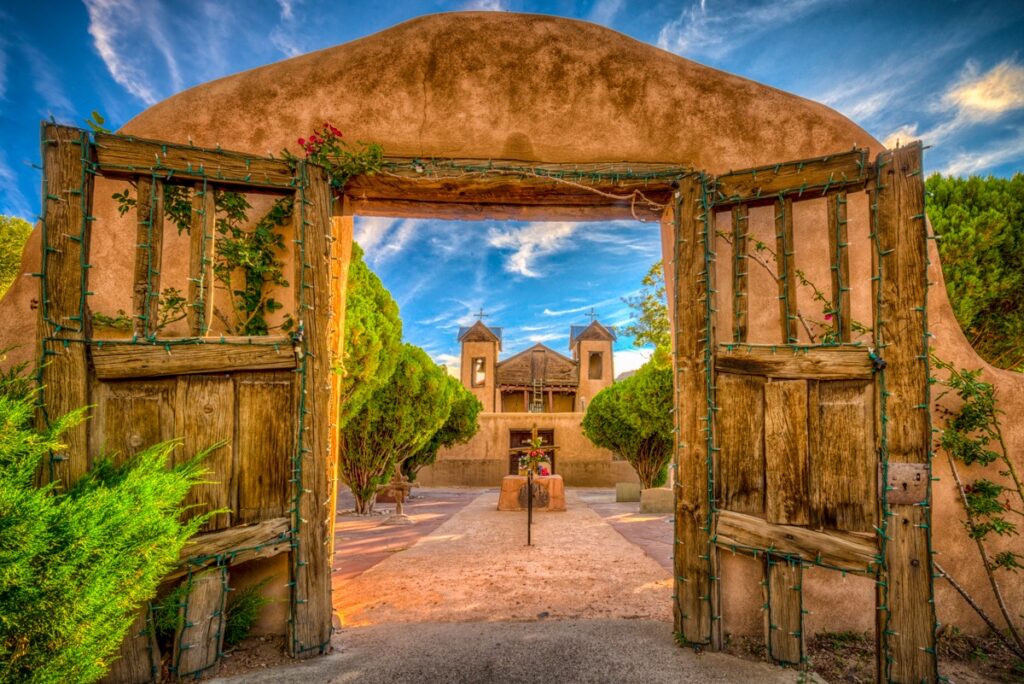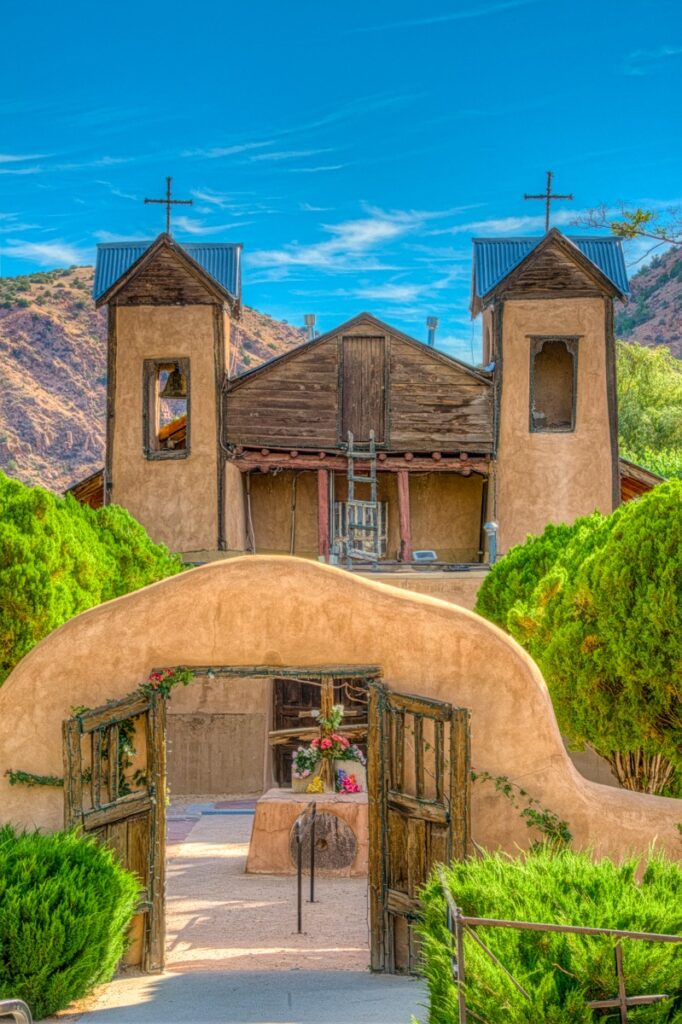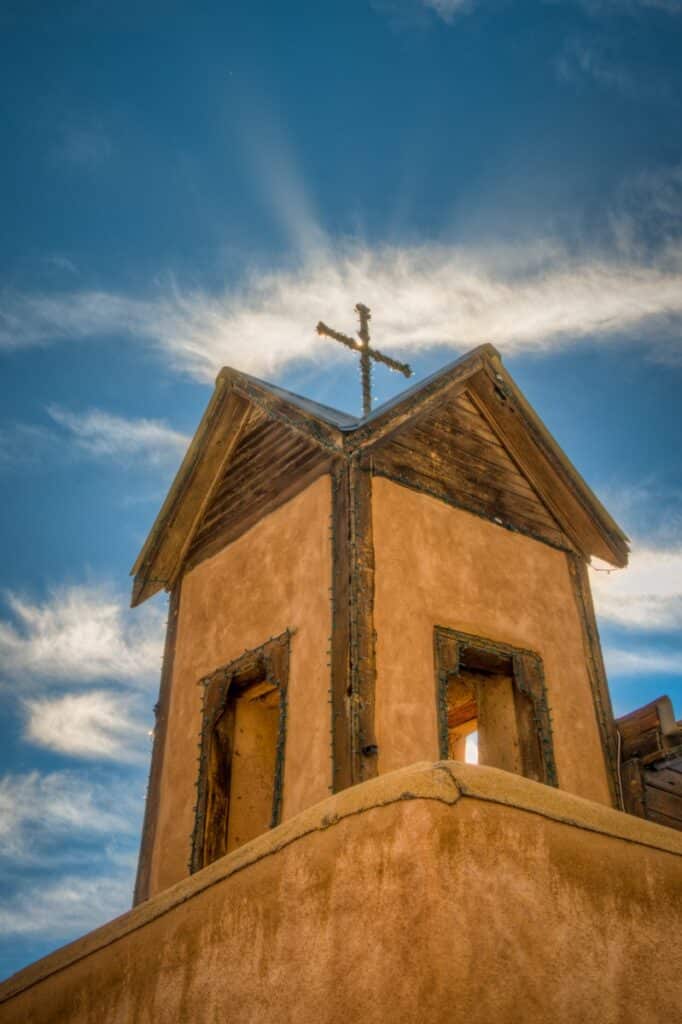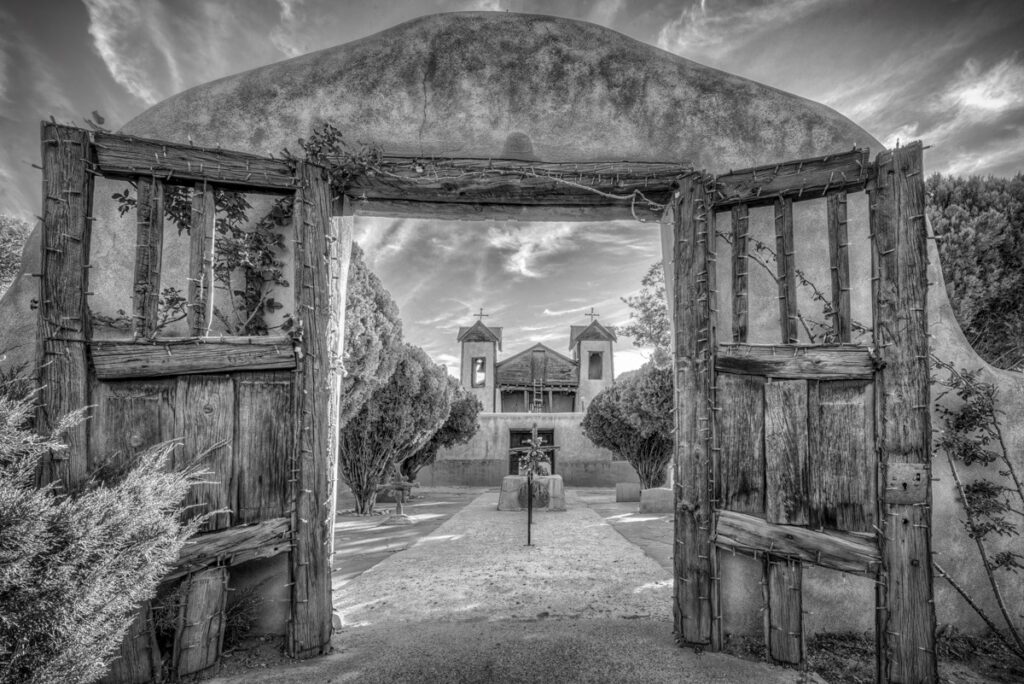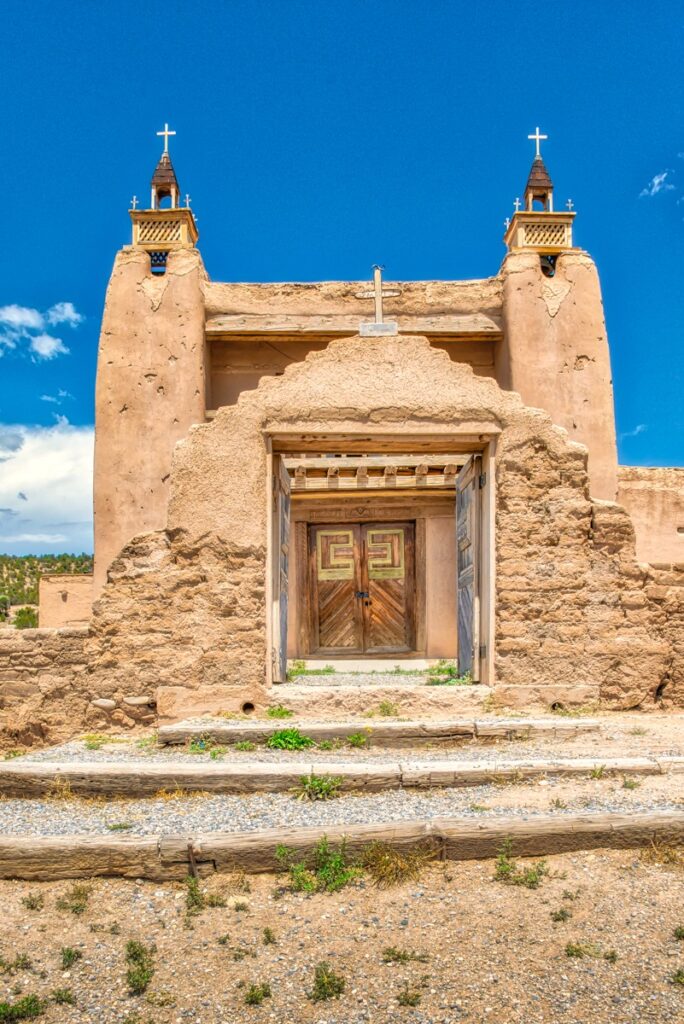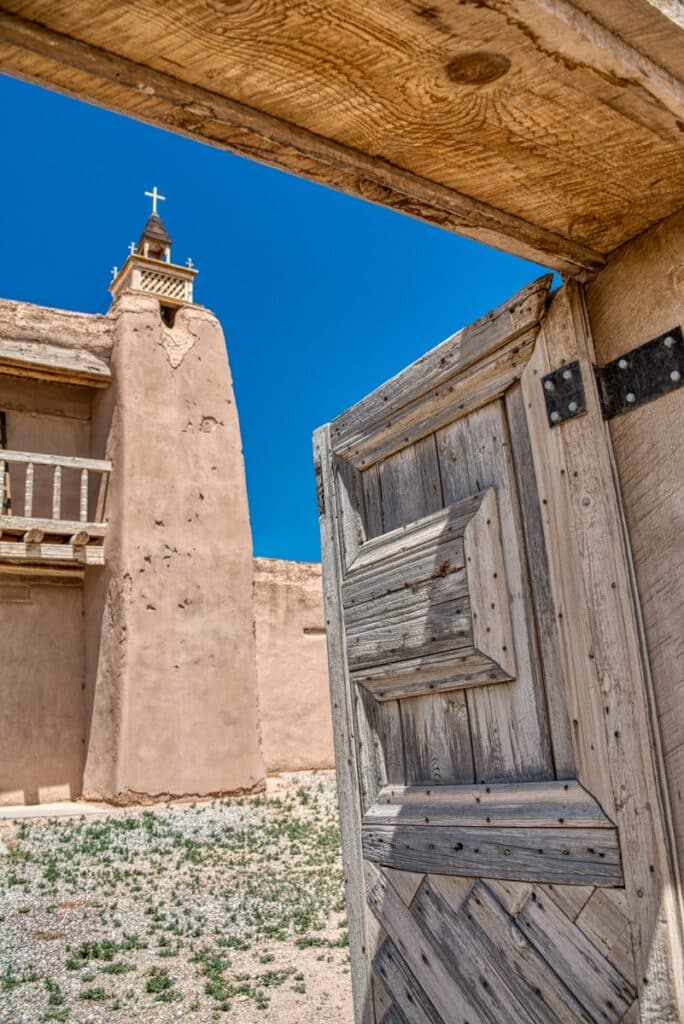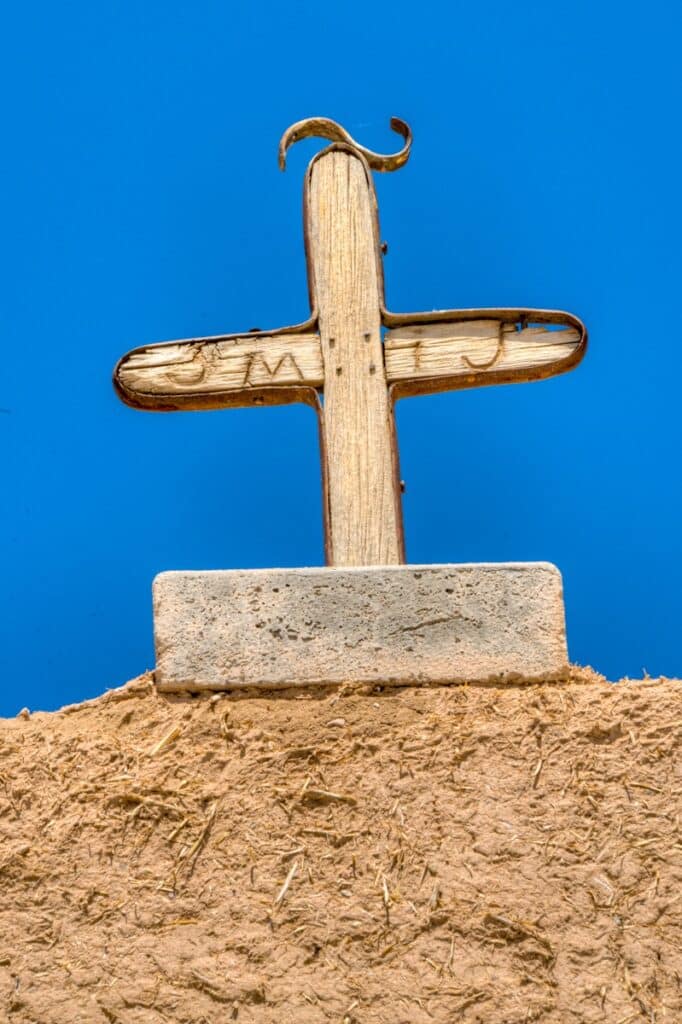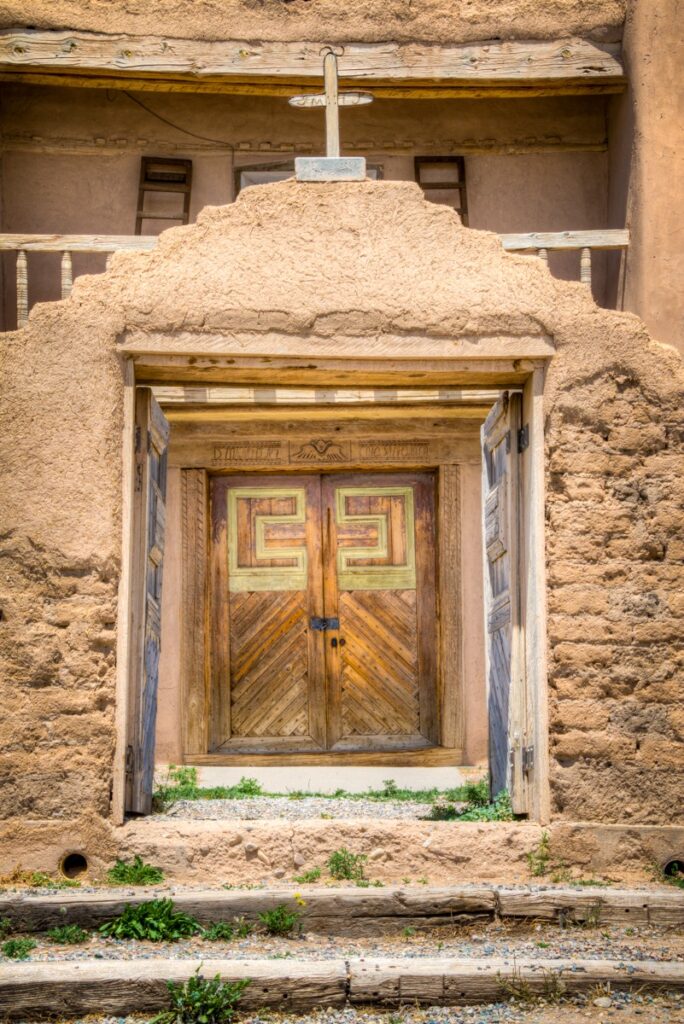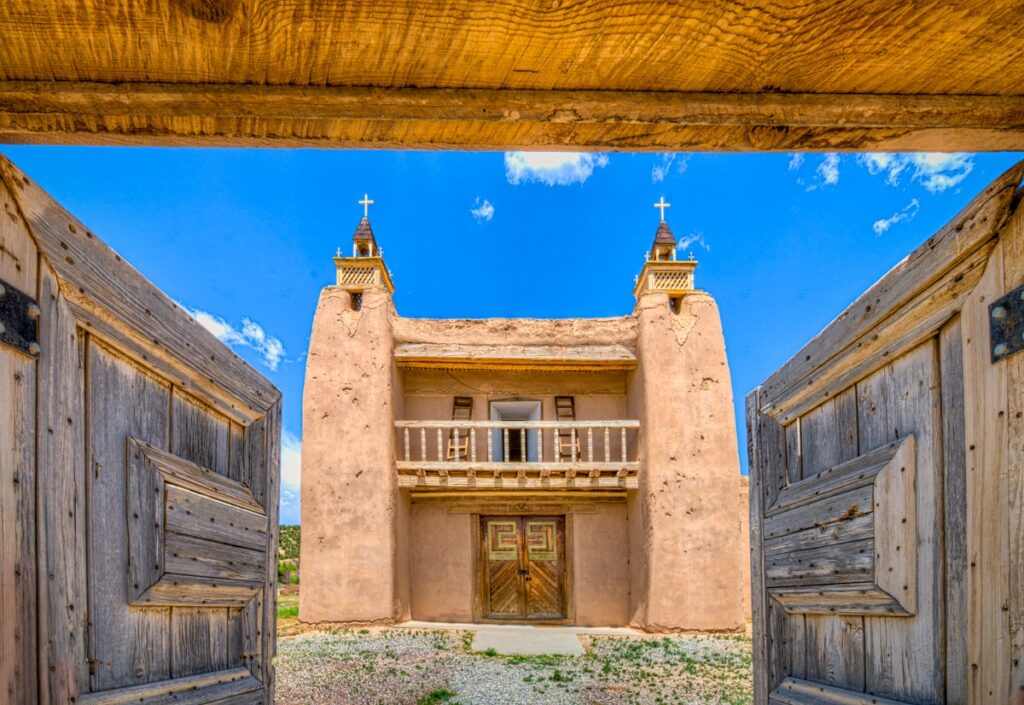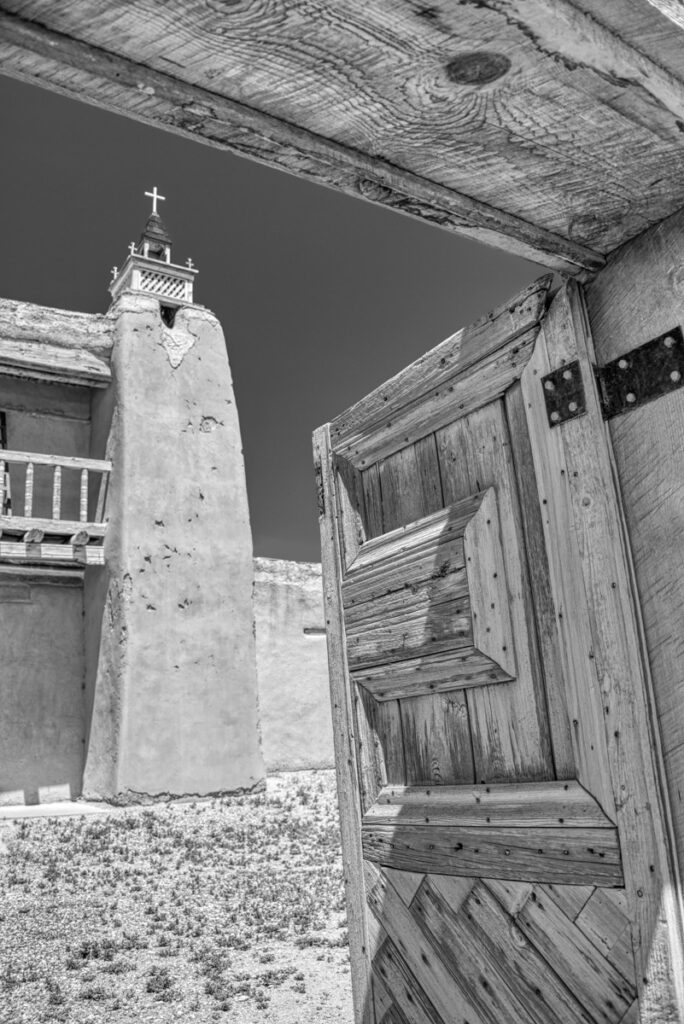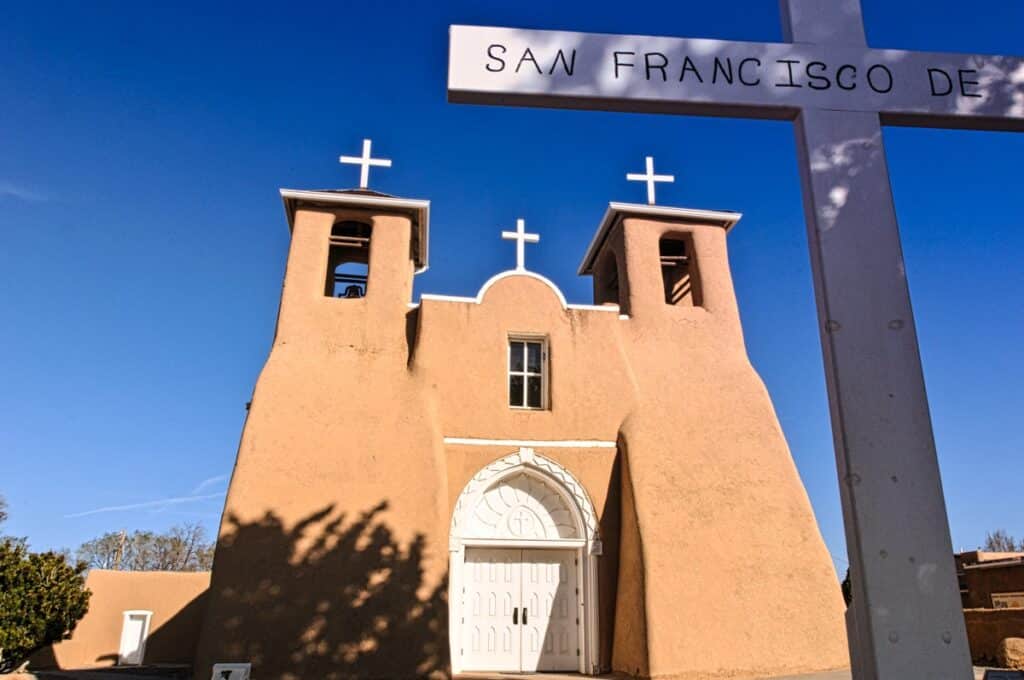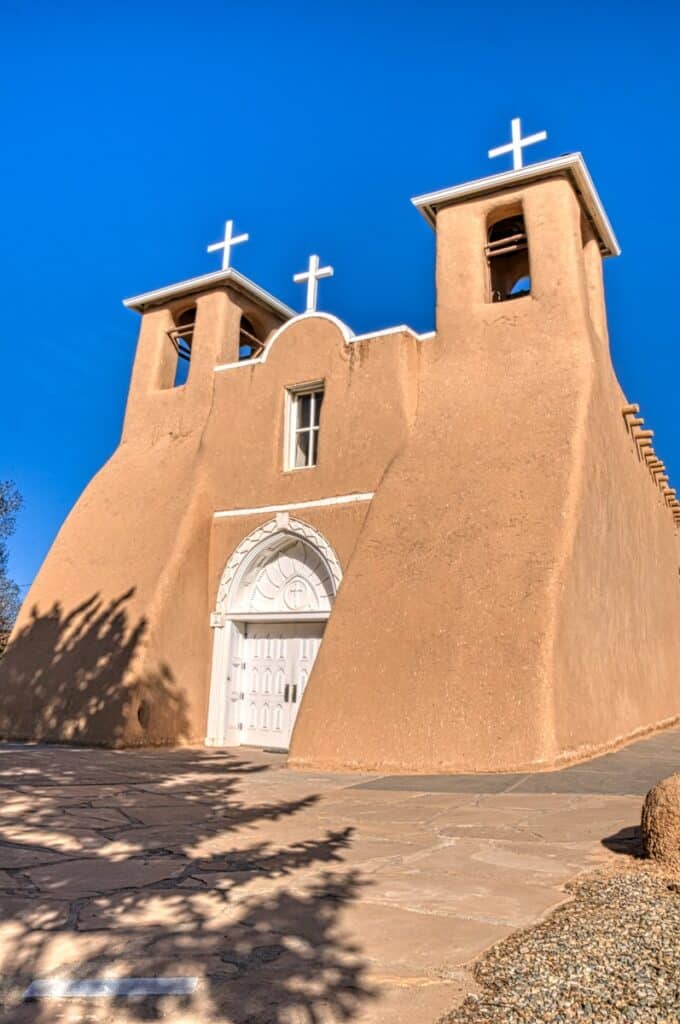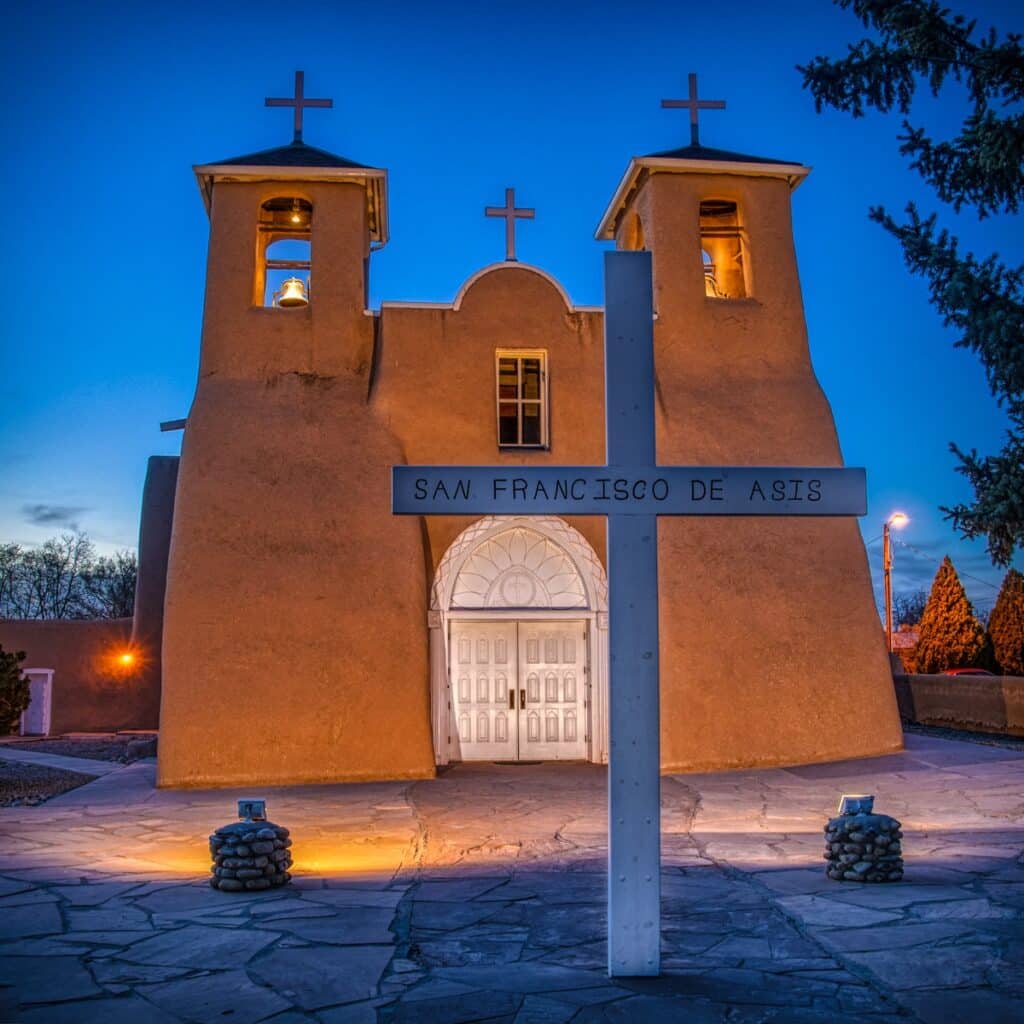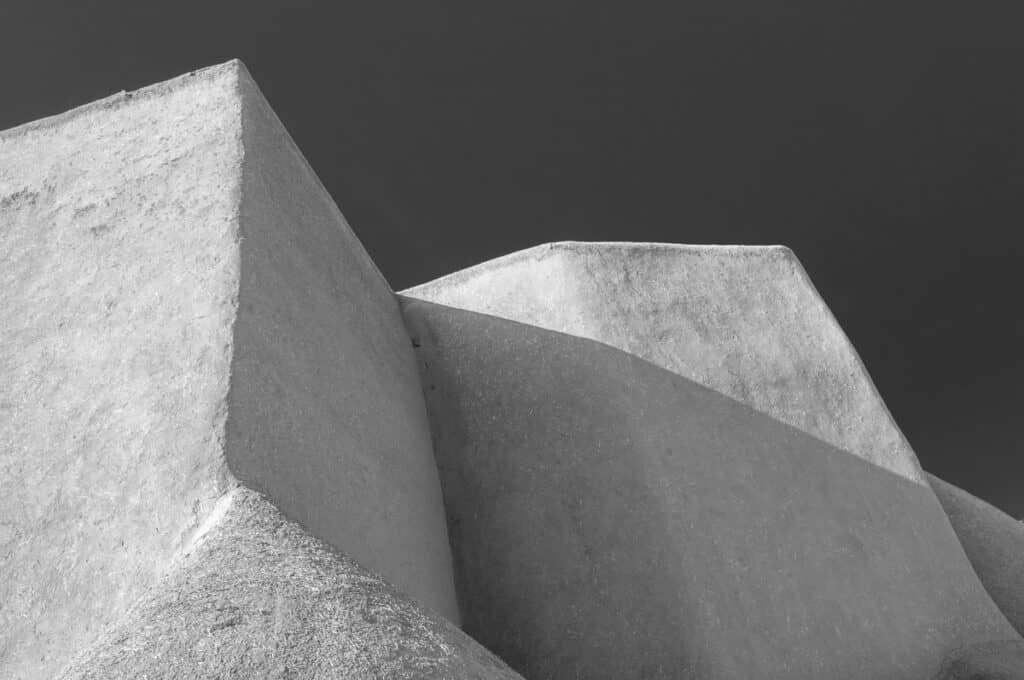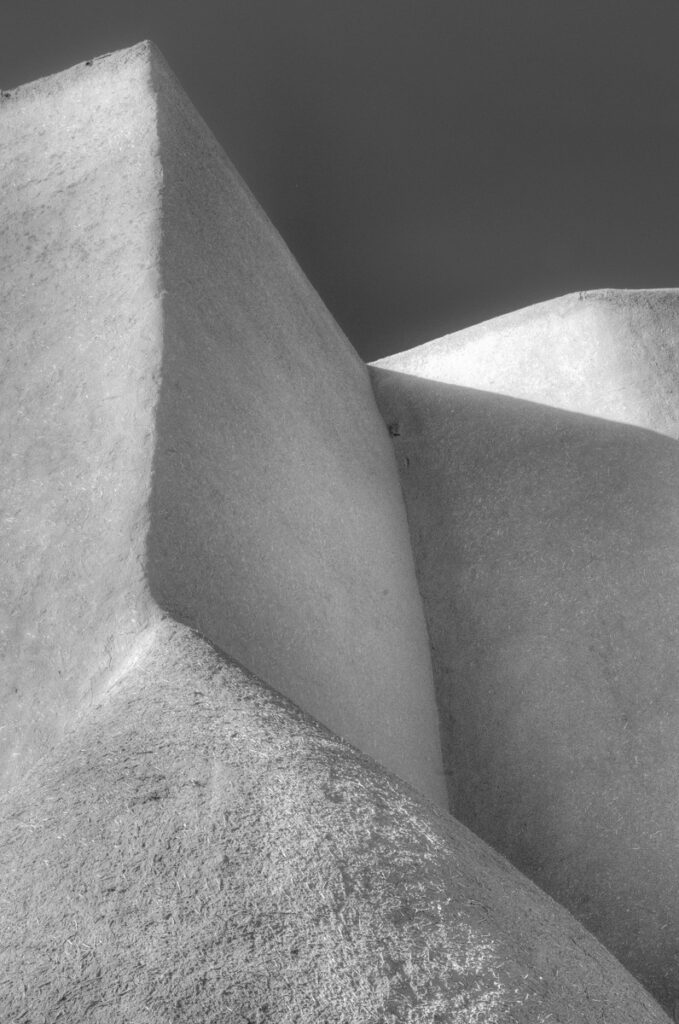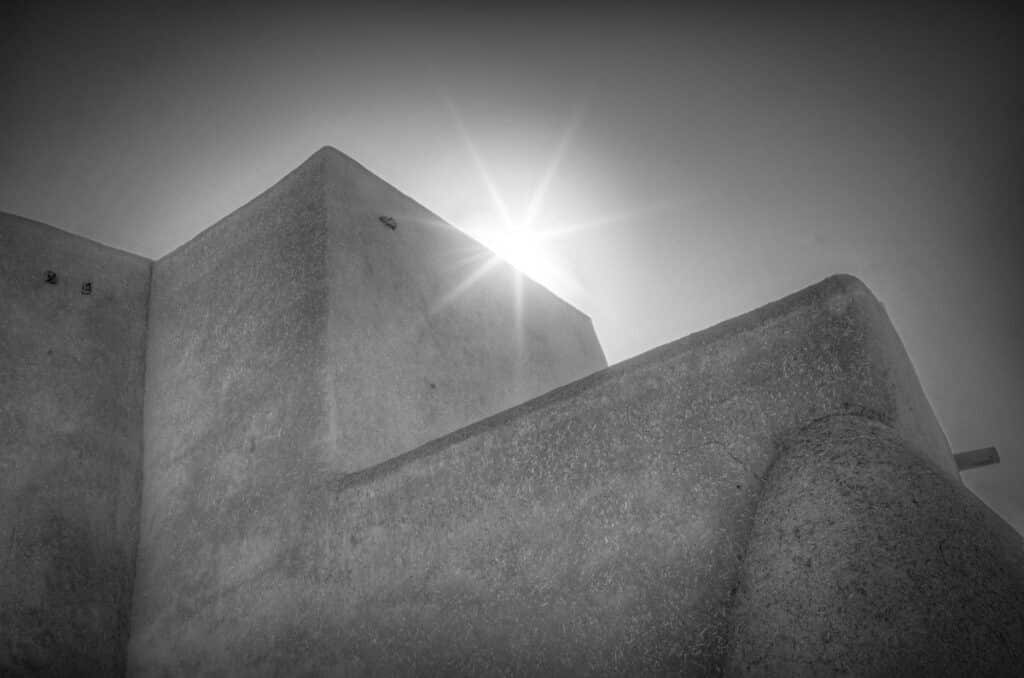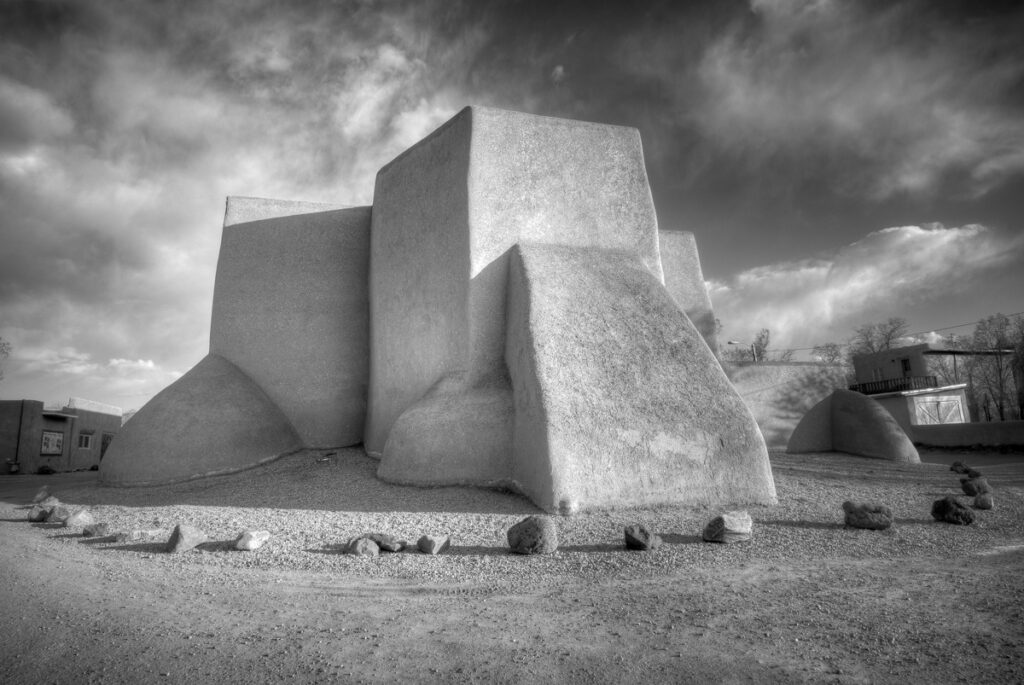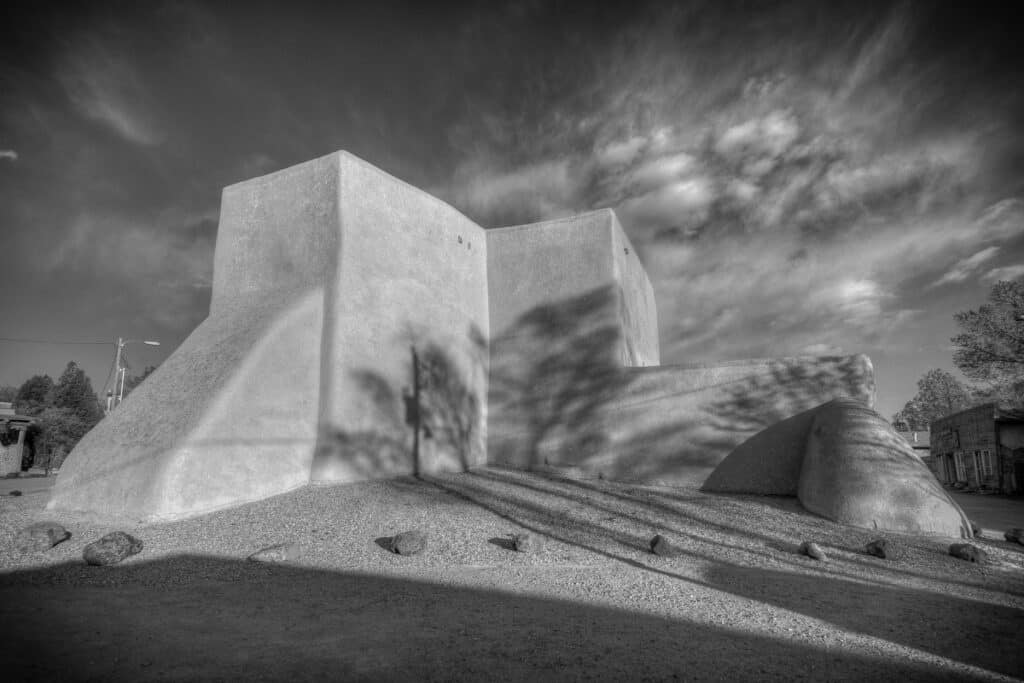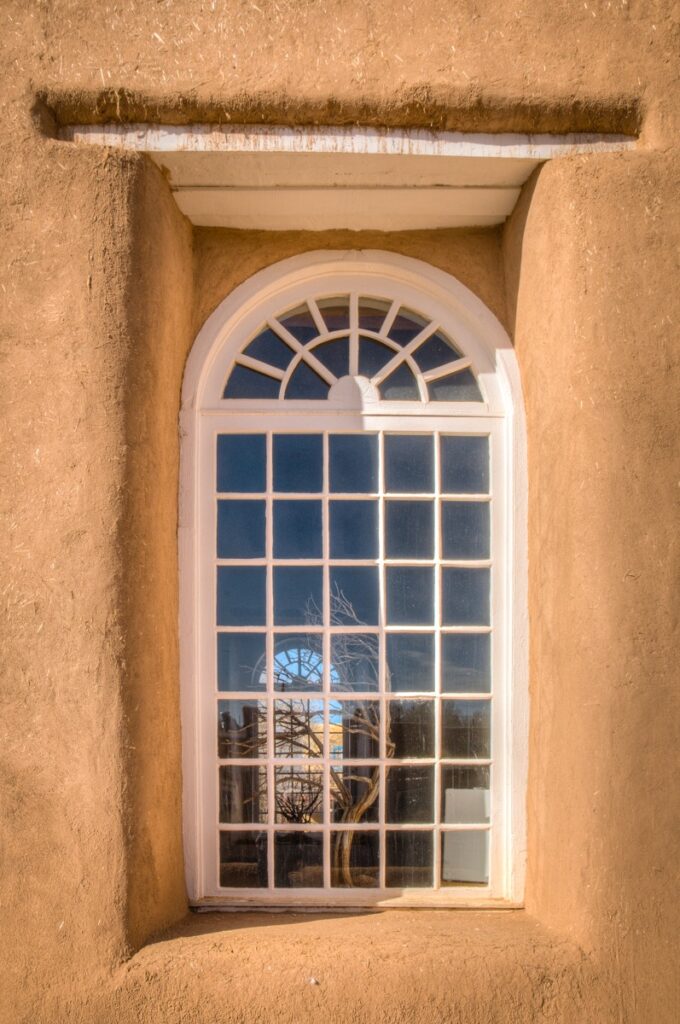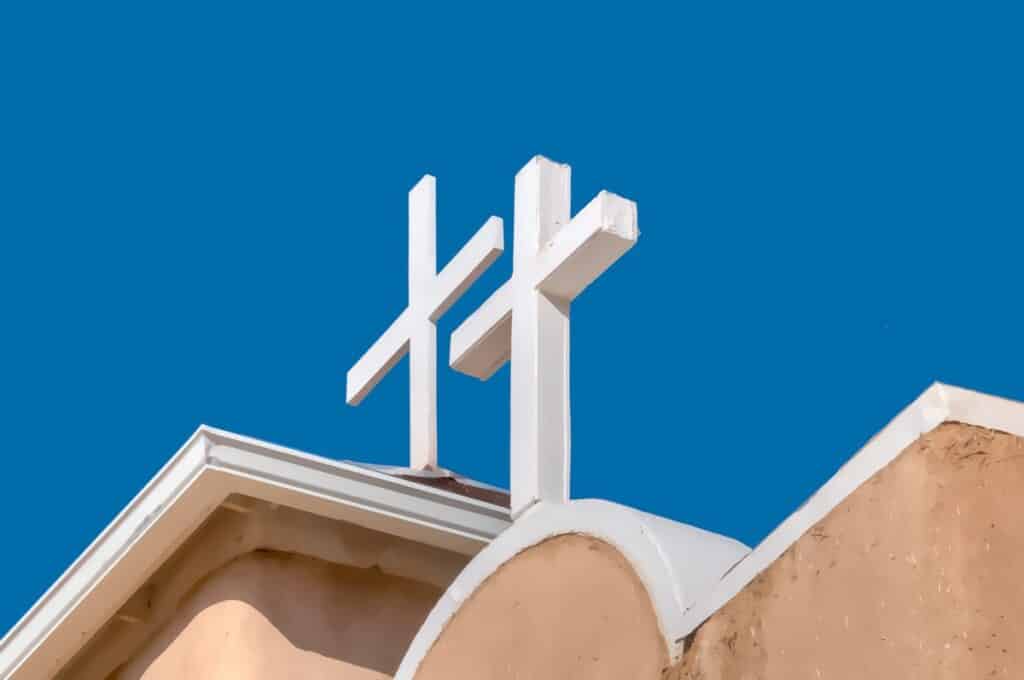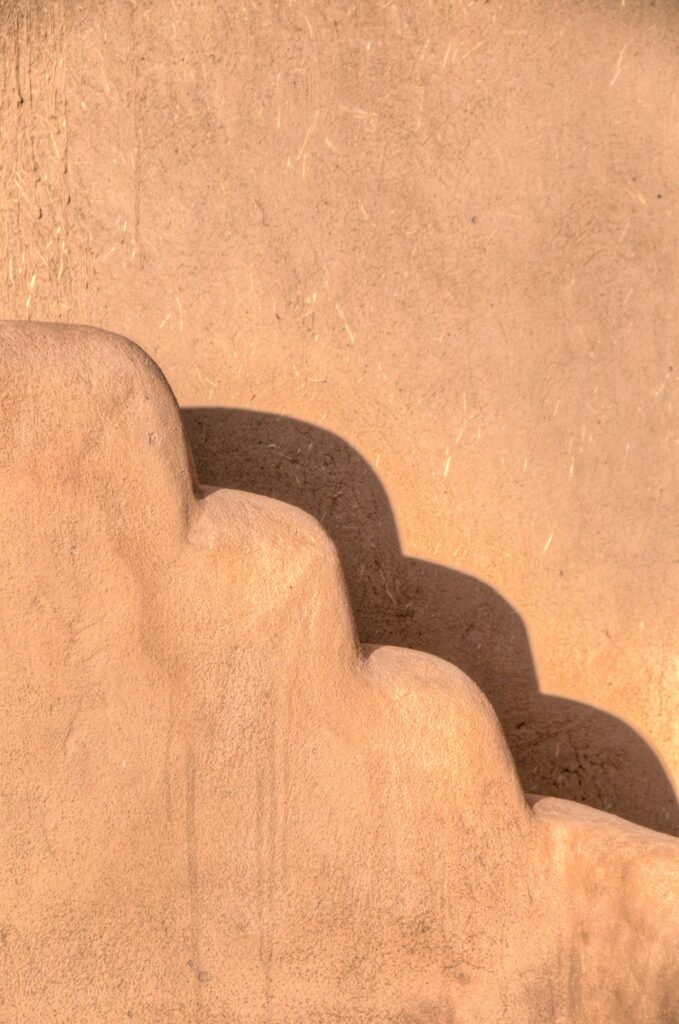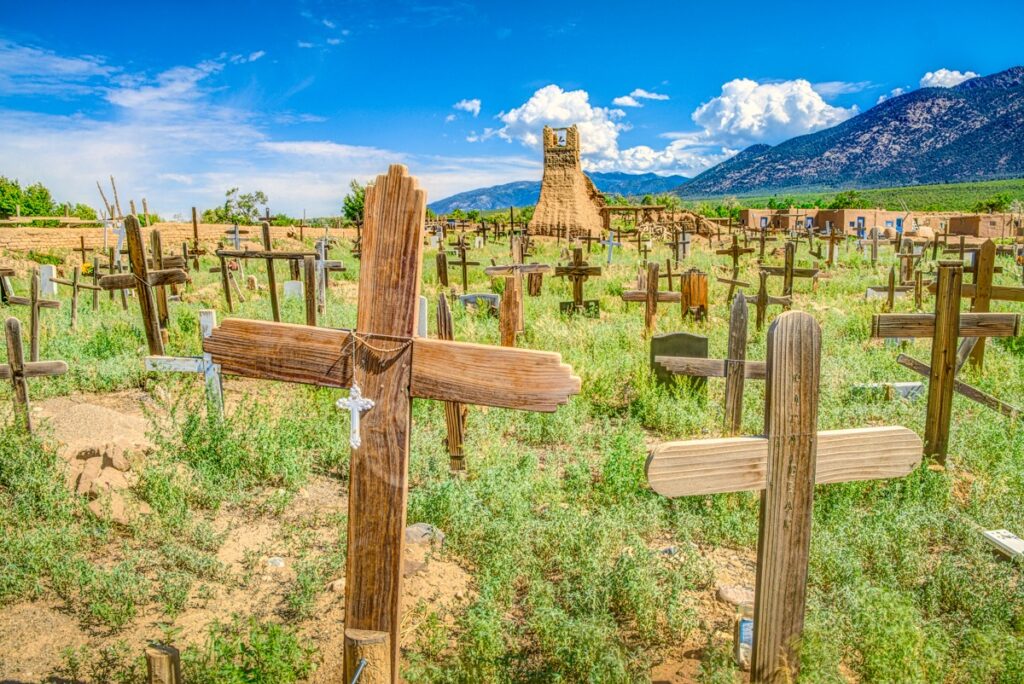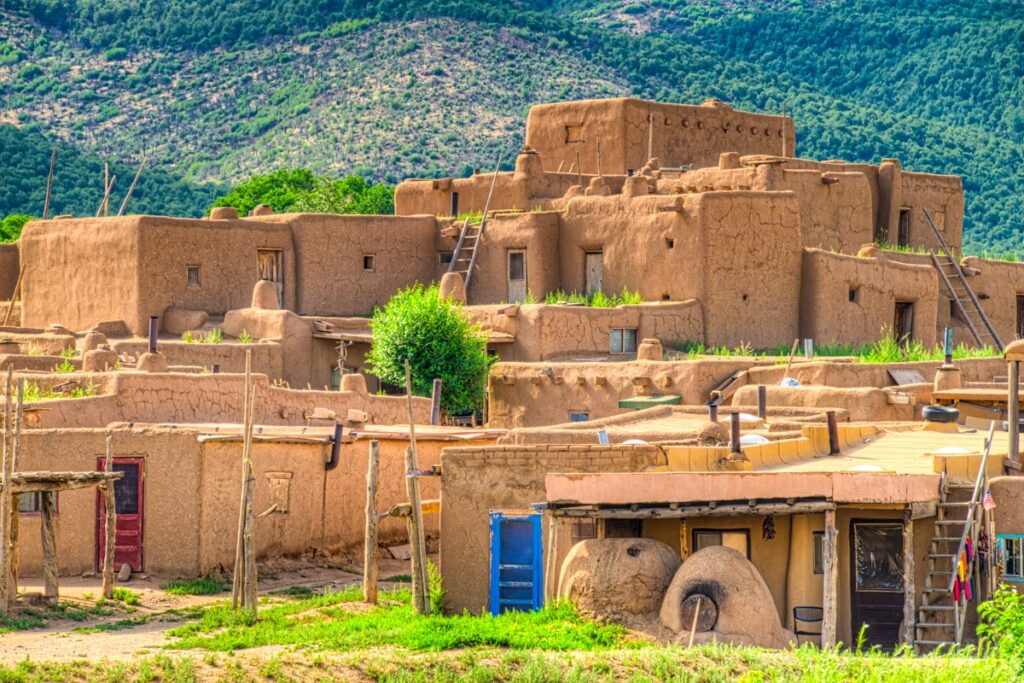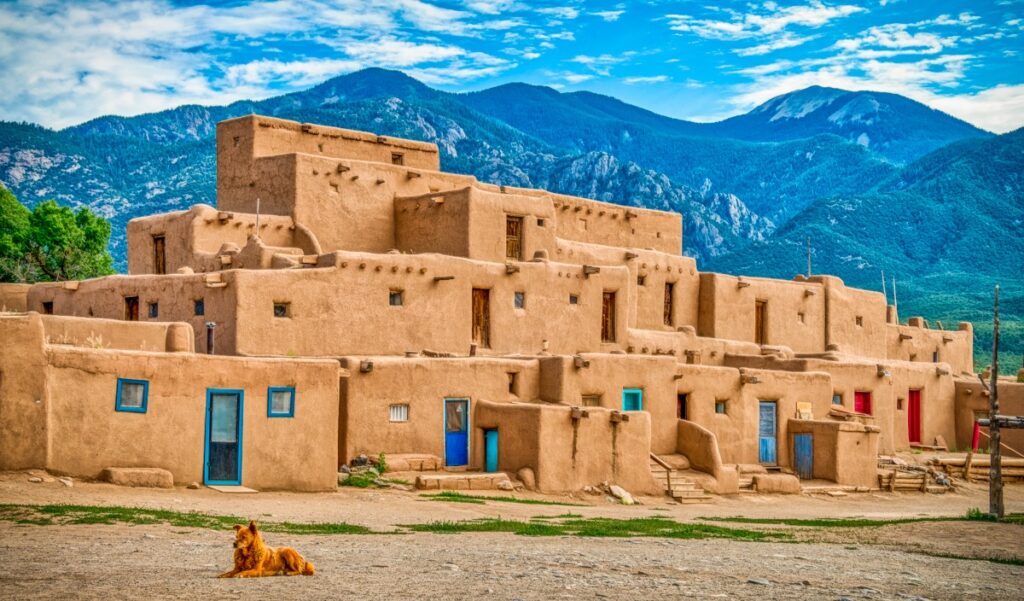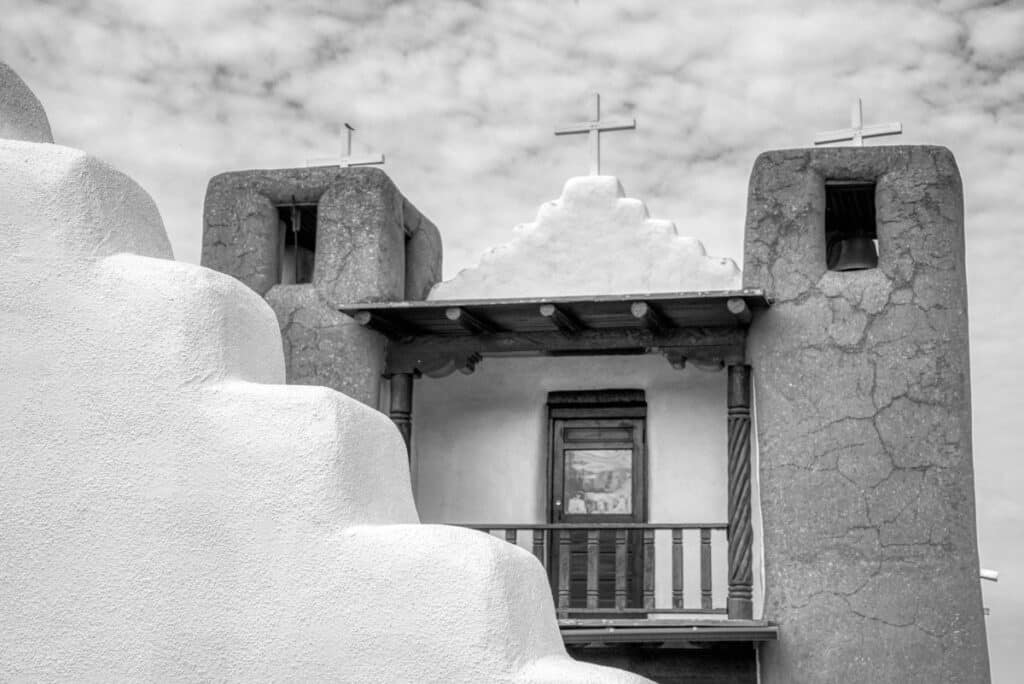Photos from the High Road to Taos features historic Spanish missions, pueblos, and other attractions between Santa Fe and Taos, New Mexico. It is by no means a catalog of every attraction along the route. It is simply a collection of our favorite stops along the way.
For background information about the High Road to Taos, go to this taos.org site. (https://taos.org/plan-your-trip/high-road-taos-santa-fe/). And, here is a Google map showing the route: https://www.google.com/maps/d/u/0/viewer?msa=0&ll=36.06473882395251%2C-105.79216049316403&spn=0.638064%2C1.226349&mid=1U1SDY3kRIUFkc9C0KLX5DdSzhxA&z=11.
Santa Fe – Where the High Road to Taos Begins
Before heading out of Santa Fe on the High Road to Taos (US 85/285), we took the opportunity to visit San Miguel Mission, the Loretto Chapel, and Saint Francis Cathedral. All three are historic and very photogenic.
San Miguel Mission
We visited this church very early in the morning. Because of the early hour, we were unable to view the interior. So, the only photos were took in this trip were of the exterior.
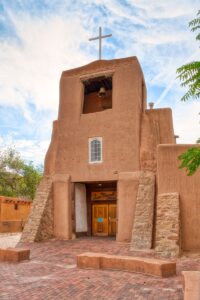
Built between 1610 and 1626, San Miguel Mission is the oldest known church in the continental United States. There have been numerous repairs and reconstructions throughout the years. So, the present building dates from 1720. To learn more, go to the San Miguel Website at: sanmiguelchapel.org.
Loretto Chapel
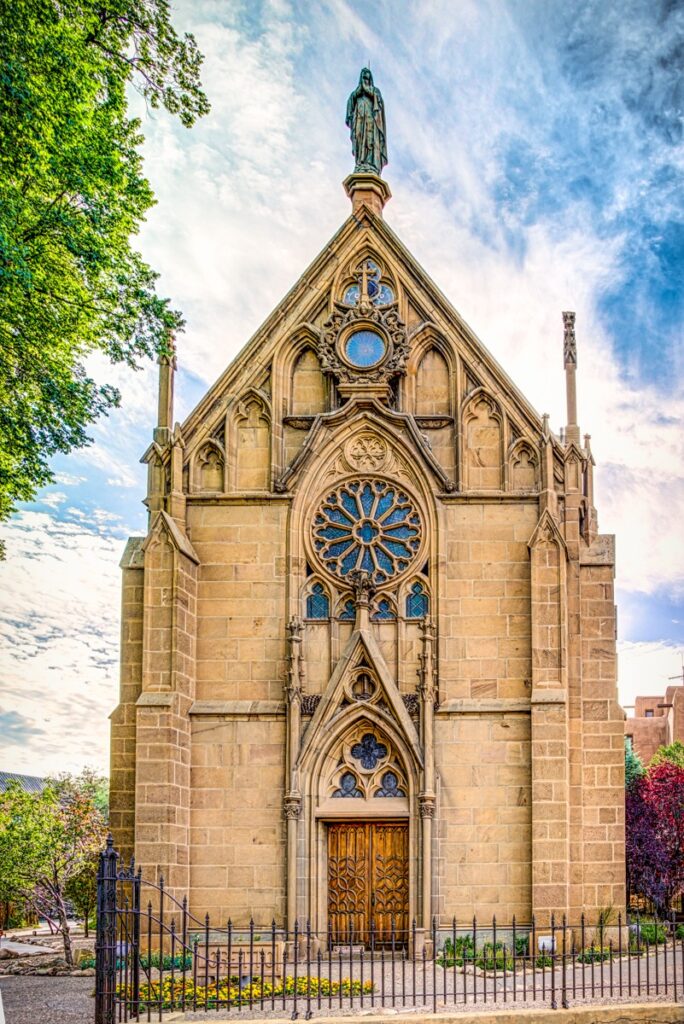
The Loretto Chapel is a Gothic Revival church in Santa Fe, New Mexico. And, it functions as a museum and a wedding chapel. Aside from its stunning interior, the most famous feature of this chapel is the “miraculous” spiral staircase that leads to the choir loft. Here are photos of the interior.
First known as Our Lady of Light, construction of the chapel started in 1873. Antoine and Projectus Mouly from Paris designed and supervised the construction of this Gothic Revival style church, until the funds ran out. In the meantime, Santa Fe’s bishop Lamy charged the Sisters of Loretto, a religious order, to maintain the chapel.
To complete the chapel and make it useful, stairs were needed to allow access to the choir loft. But, there were no more funds available for construction. So, the Sisters prayed for a miracle. In answer to their prayers, a carpenter turned up and offered to build the stairs. Learn more about this story at www.historicmysteries.com/loretto-chapel-staircase/.
Cathedral Basilica of Saint Francis of Assisi
The cathedral is a beautiful example of the Romanesque Revival style. Built between 1869 and 1886, it exists on the site of a much older adobe church .
The interior of the cathedral has been incrementally remodeled and refurbished starting in the late 1980’s. Therefore, what you see today is airy and light with frescos, a new reredos, and beautifully painting representing the stations of the cross.
A bit of the original 1714 structure is visible in the La Conquistadora Chapel, located in a nave just before the apse.
This Wikipedia article (https://en.wikipedia.org/wiki/Cathedral_Basilica_of_St._Francis_of_Assisi_(Santa_Fe)) provides a nice overview of this church.
Nambe Pueblo
Once on the high Road to Taos, we turned off US 85/285 north of Pojoaque onto State Road 503 to Nambe Pueblo. Our destination was the Nambé Falls in the Nambé Falls Recreation Area.
After parking in the picnic area, we hiked a trail up toward Nambé Falls. It is a beautiful multi-tiered waterfall supplied by water from Nambe Reservoir. It plunges over 190 feet into the Nambé River. The most stunning feature of the waterfall was its chocolate-brown color. This was due to recent rains in the area that stirred up muddy sediment in the reservoir that supplies its flow.
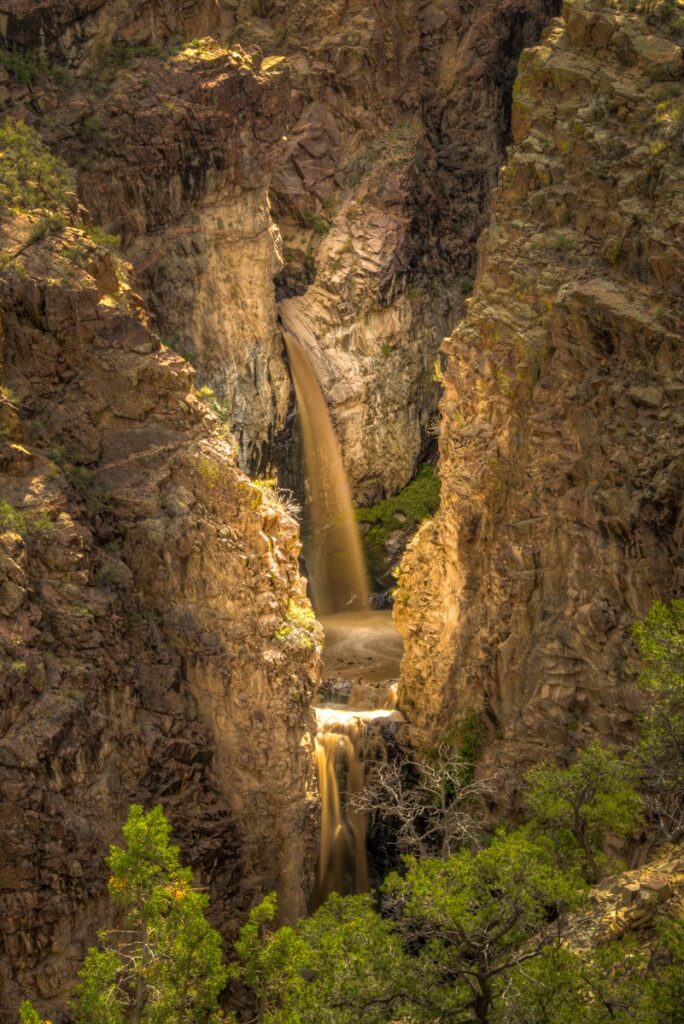
For more information about Nambe Pueblo, take a look at their Website at http://nambepueblo.org/nambe-falls-lake/.
Santuario de Chimayo Chapels
After Nambe, we continued on State Road 503 until we came to the intersection with State Route 98 (Juan Medina Road). We turned onto Route 98 heading north to Chimayo. Our destination was Santuario de Chimayo, a compound containing two small adobe chapels. This is probably the most famous stop along the High Road to Taos.
Esquipulas Chapel
Built between 1811and 1816. The main church in Chimayo is Esquipulas Chapel, or Capilla Del Cristo de Esquipulas. This chapel is one of the most important pilgrimage sites in the United States. This is primarily due to Esquipulas Chapel, which is famous for the miraculous healing powers attributed to its holy dirt, or Tierra Bendita. To learn more about the Santuario, visit https://www.holychimayo.us/.
Because it was Holy Week, we did not enter the sanctuary to photograph the interior.
Santo Niño de Atocha Chapel
The Santo Nino Chapel is also within the compound of Santuario de Chimayo. The chapel is dedicated to the devotion of the Holy Child of Atocha. A local bed and breakfast has a nice introduction to the chapel on their Website at https://casaescondida.com/blog/santo-nino-chapel/.
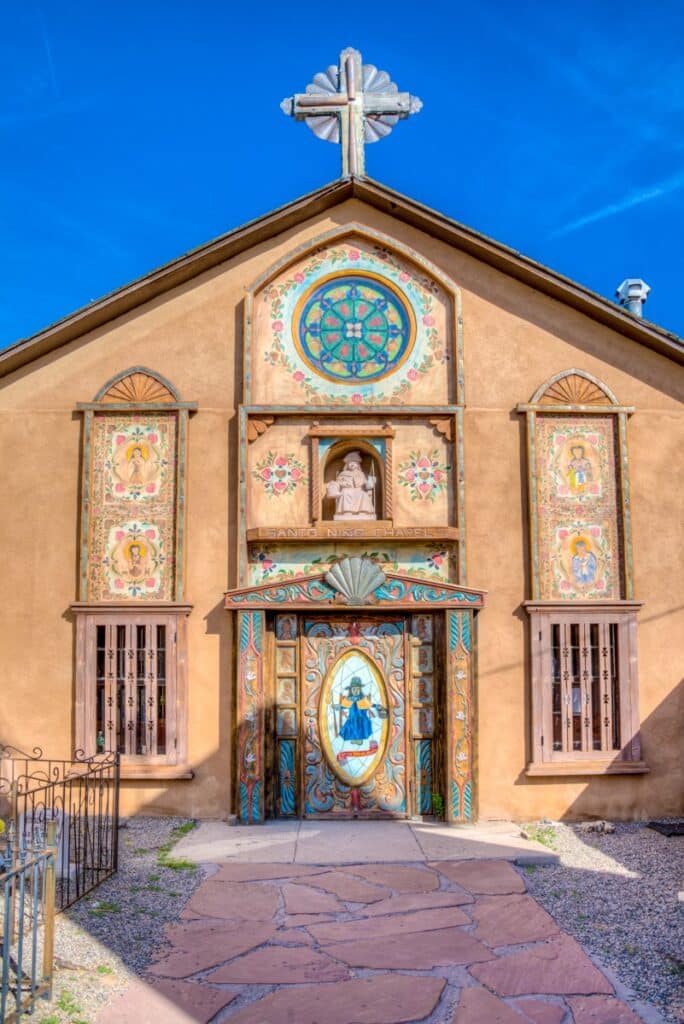
San Jose de Gracia Church – Las Trampas
Our next stop was the San Jose de Gracia Church in Las Trampas. Located along State Road 76 in the Sangre de Cristo Mountains, Las Trampas it is approximately halfway between Santa Fe to the south and Taos to the north.
The construction began on San Jose de Gracia Church in1760. And, the completion date of the church was around 1776. Today, San Jose de Gracia Church is one of the best preserved examples of Spanish Colonial Mission architecture in New Mexico. To learn more, visit the National Park Service site at: https://www.nps.gov/nr/travel/american_latino_heritage/Las_Trampas_and_San_Jose_de_Gracia_Church.html.
San Lorenzo de Picuris – Picuris Pueblo
Continuing northward on State Road 76, we came to Picuris Pueblo. The entrance to the pueblo is about half way between Chamisal and Penasco. Because of an impending thunderstorm, we only had time to photograph the exterior of San Lorenzo de Picuris church.
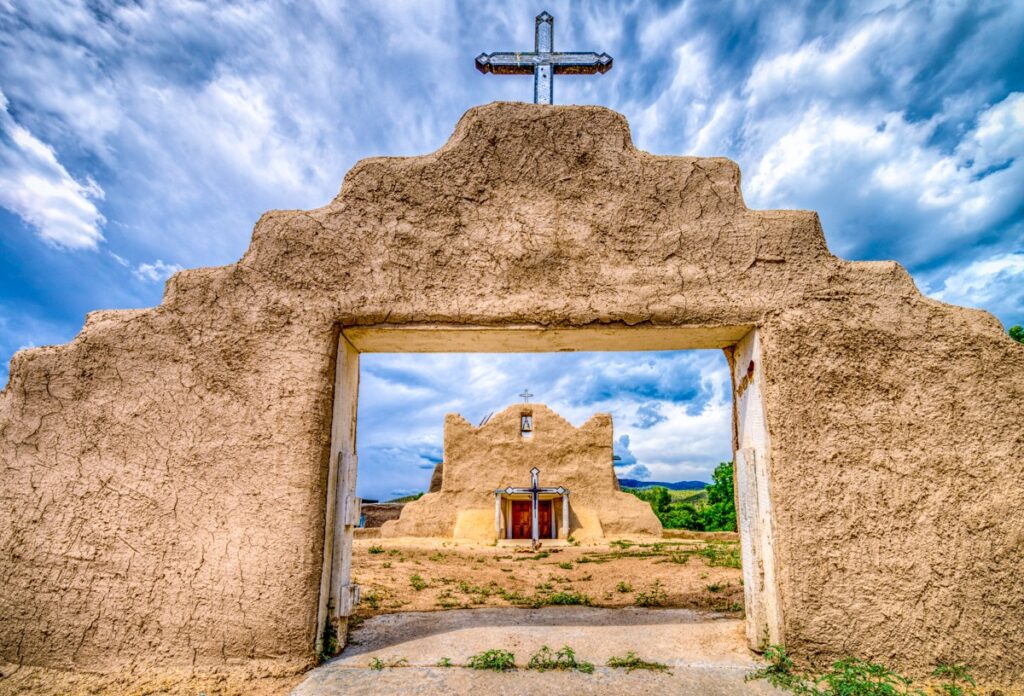
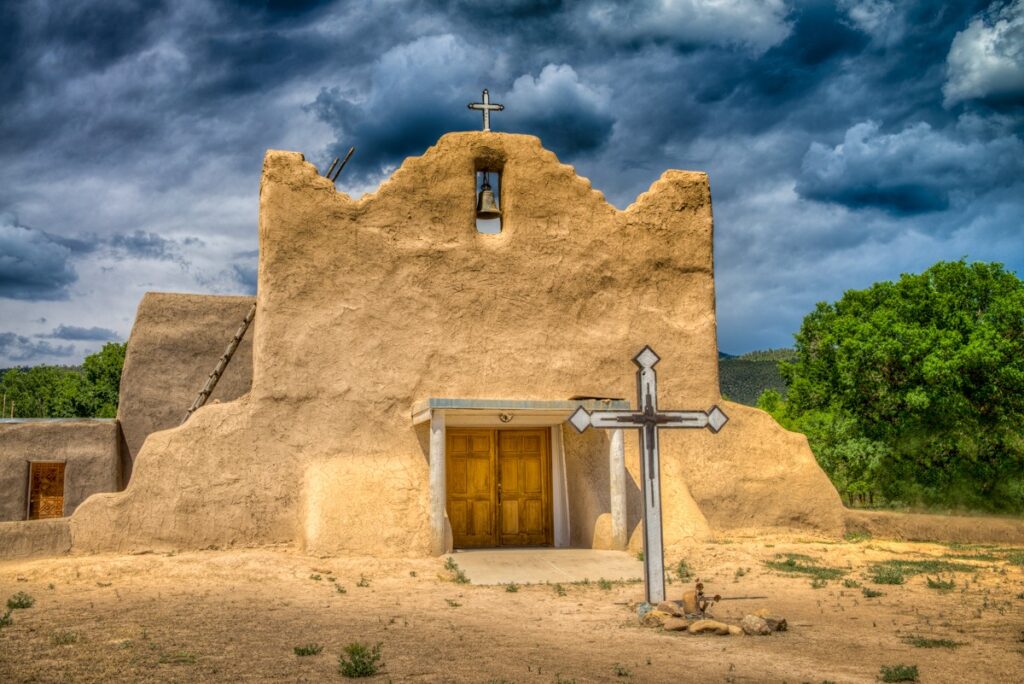
The mission church we see today appears much as it was in 1778, albeit somewhat restored. The National Park Service has more information about Picuris on their Website at: https://www.nps.gov/subjects/travelspanishmissions/san-lorenzo-de-picuris.htm.
Nuestra Senora de San Juan de los Logos Church – Talpa
Our next stop was in Talpa, about 10 miles south of Taos. After we left Picuris Pueblo, State Road 76 ran into State Road 518 and we took 518 northward toward Talpa. It was late in the afternoon as we arrived at the Chapel of Nuestra Señora de San Juan de los Lagos in Talpa.
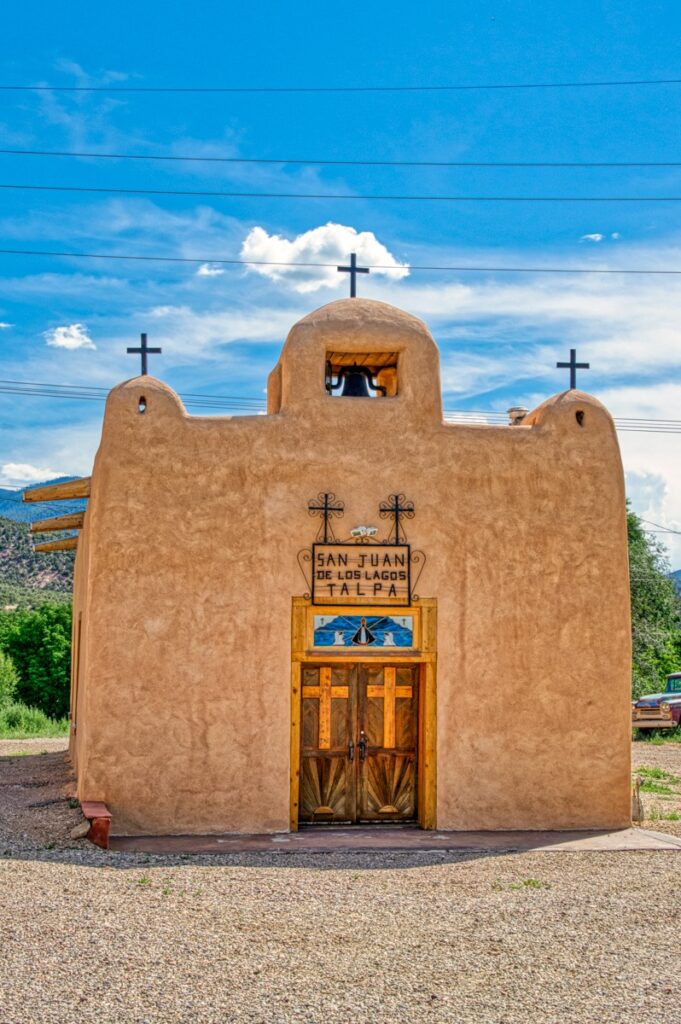
A wealthy member of the Talpa community built the chapel in 1828. This was because he wanted a place of worship within his tiny community, rather than having to travel to Ranchos de Taos.
San Francisco de Asis Mission Church – Ranchos de Taos
This magnificent church in Ranchos de Taos was the final destination on the High Road to Taos. San Francisco de Asis Mission Church, finished in 1812, is probably one of the most photographed and painted church in the US, certainly in the Southwest.
The interplay of shadow and light on the adobe walls was facinating. Like other photographers before us, we found the massive buttresses at the front and rear of the structure awesome.
To learn more about this building, go to the National Park Service site at https://www.nps.gov/nr/travel/american_latino_heritage/San_Francisco_de_Assisi_Mission_Church.html.
Taos Pueblo and San Geronimo de Taos
Though not technically on the High Road to Taos, Taos Pueblo is a must-see destination that provides a small glimpse into what pueblo life might have looked like during Spanish colonial times.
The pueblo’s Website says that the multi-storied buildings have been continuously inhabited for over 1000 years. And, the pueblo is one of the oldest continuously inhabited communities in the United States. To learn more about Taos Pueblo, go to the pueblo’s Website at: http://taospueblo.com. There is also information available from the National Park Service at: https://www.nps.gov/nr/travel/american_latino_heritage/taos_pueblo.html.
The mission church that dominates the plaza is San Geronimo de Taos, built in 1850. The ruins of an older church are to the northwest, surrounded by a cemetery.
Purchasing our photographs
All of our scenic and fine art photographs are available as fine art prints. There are two exceptions: None of the photos from Taos and Picuris Pueblos are for sale.
Use the contact form to the right to get more information. Or, go to our Fine Art Print page to learn about various pricing options.

